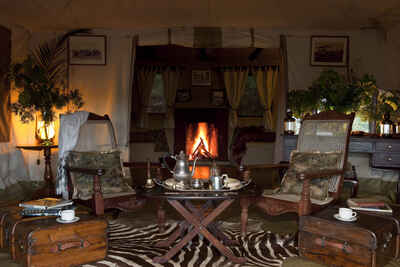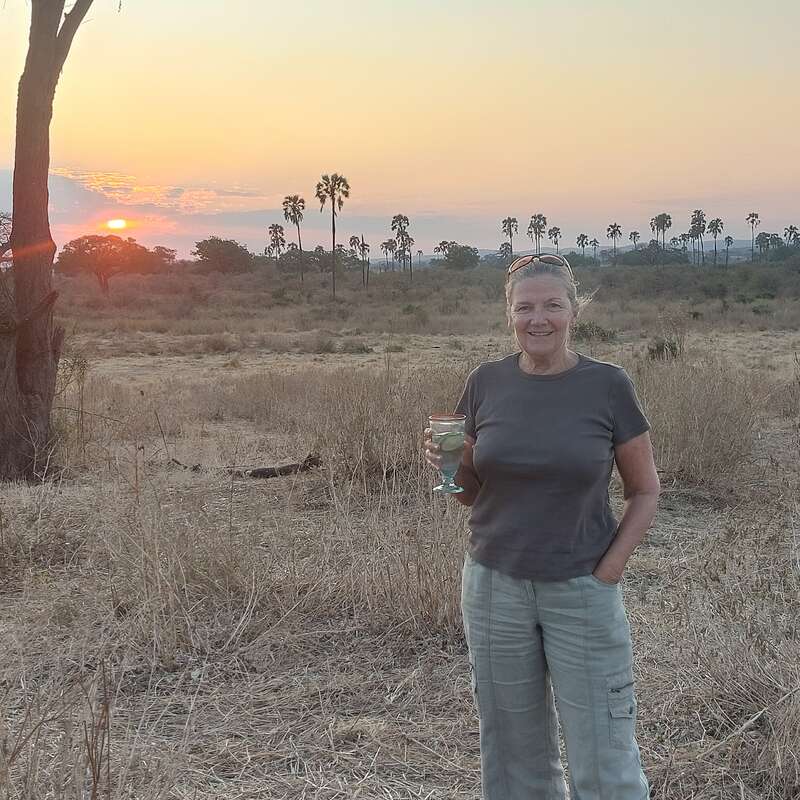About Cottars 1920s Camp
Located on its own private conservancy Cottar's 1920s Camp is owned and run by Calvin and Louise Cottar who ...
... established this luxurious camp in the 1990s. Designed in an authentic 1920s style, the camp follows the iconic Out of Africa style and has access to a remote part of the Maasai Mara.
Cottar's certainly may have been one of the best camps in the Mara, but it now has stiff competition from newer operations. It’s classic, pioneer camp style, long heritage and private concession are still plus points in the busy Maasai Mara, although the varying standards of guiding and hosting may impact the overall quality of stay.
Our view
Cottar's certainly may have been one of the best camps in the Mara, but it now has stiff competition from newer operations. It’s classic, pioneer camp style, long heritage and private concession are still plus points in the busy Maasai Mara, although the varying standards of guiding and hosting may impact the overall quality of stay.
Accommodation
10 rooms
Children
Fine for all ages.
Open
All year
Activities

4WD Safari

Birdwatching

Cultural excursion

Fly-camping

Guided walking safari

Hot air ballooning

Night drive

Private activities
Traveller reviews of Cottars 1920s Camp
5 real, un-edited reviews from Expert Africa's travellers.
Arrived 9 Aug 2018, 3 nights
"Good Luxurious Camp -But too manicured for us"
Overall rating: Good
Arrived 24 Dec 2017, 4 nights
"Spectacular Cottars"
Overall rating: Excellent
Arrived 5 Sep 2017, 4 nights
"Like Living a Dream..."
Overall rating: Excellent
Arrived 15 Oct 2014, 4 nights
"Good but not as good as they think they are"
Overall rating: Good
Arrived 4 Aug 2014, 4 nights
"Cottars 1920s Camp review"
Overall rating: Excellent
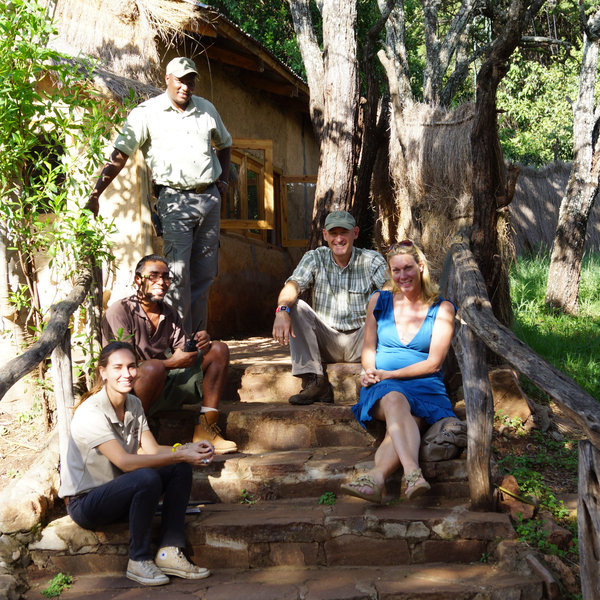
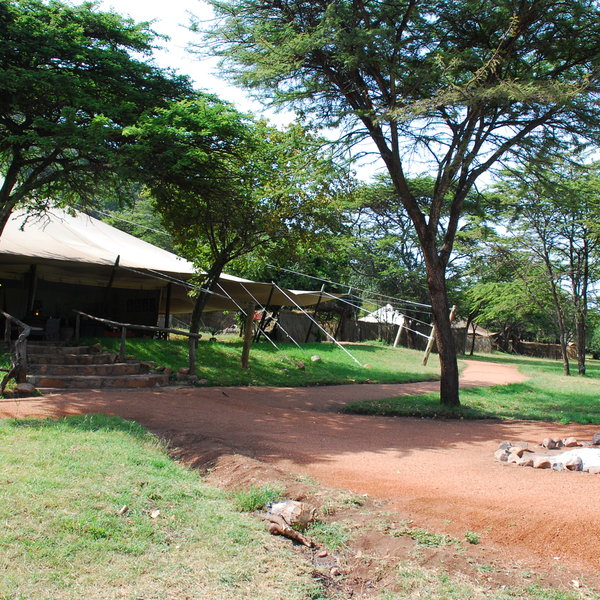
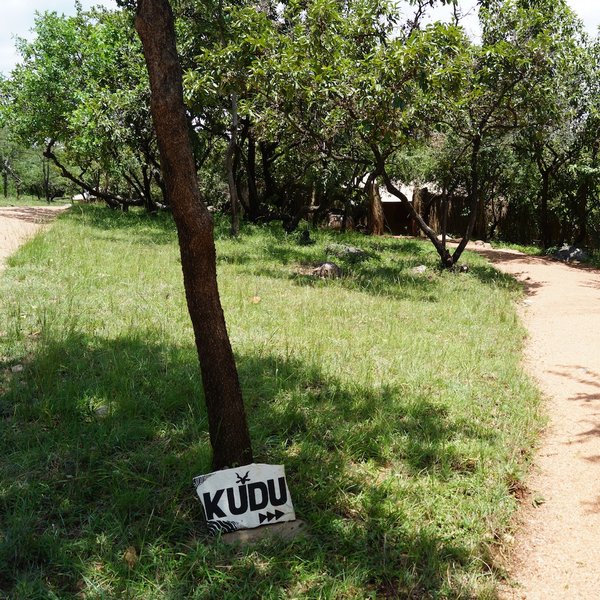
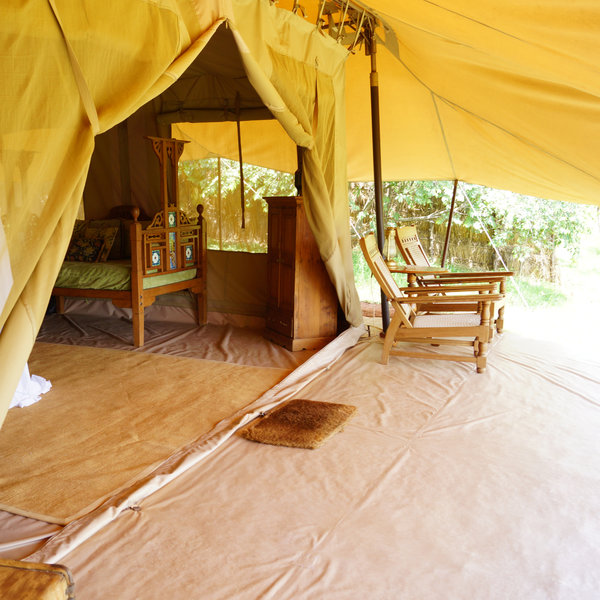
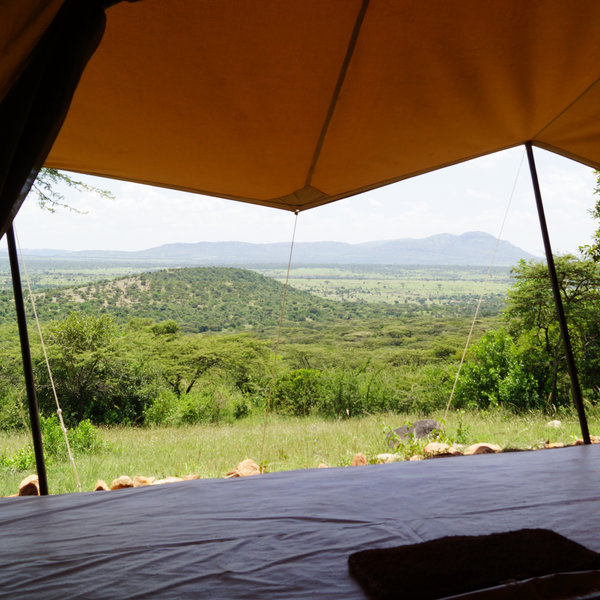
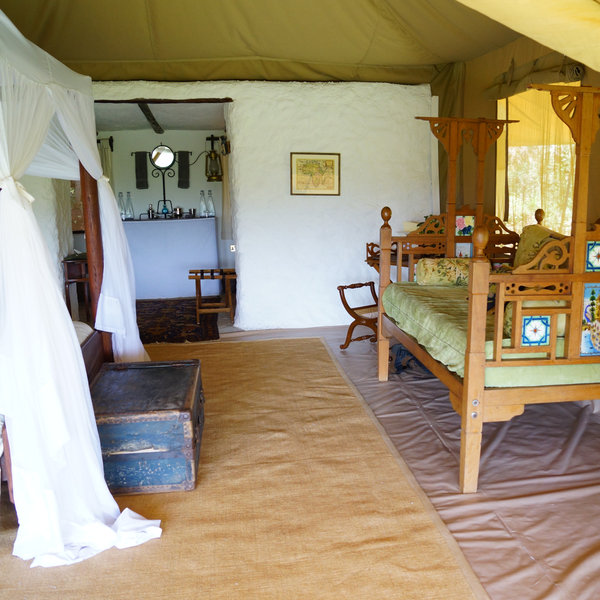
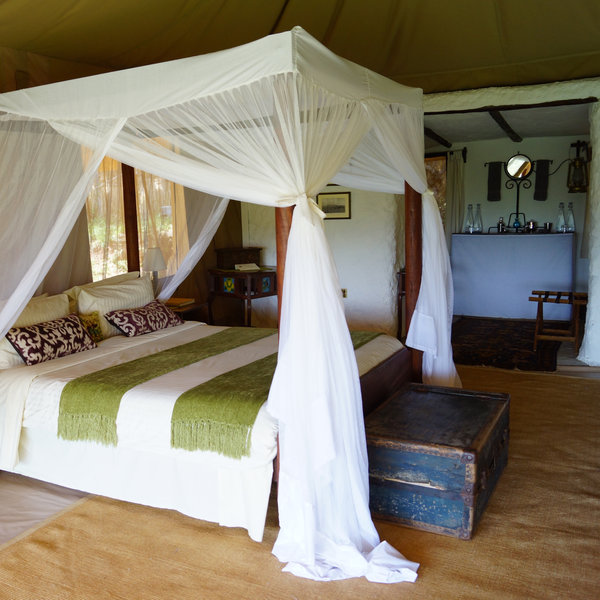
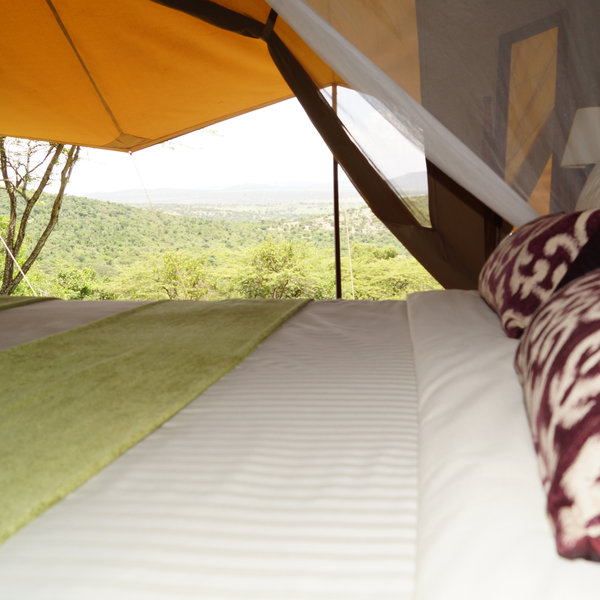
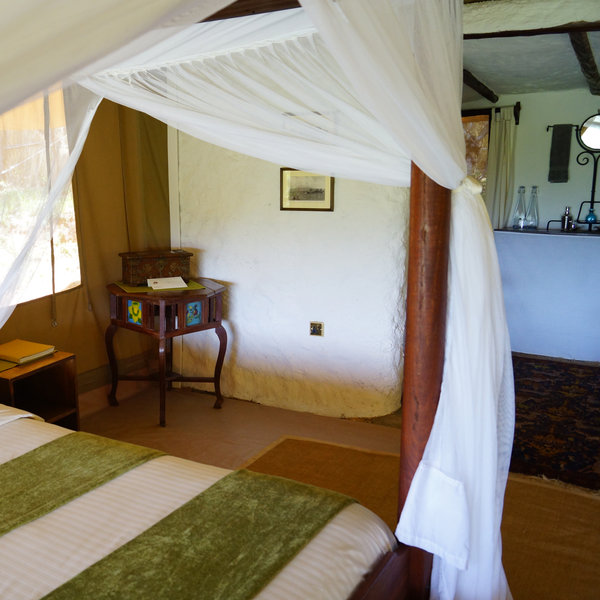
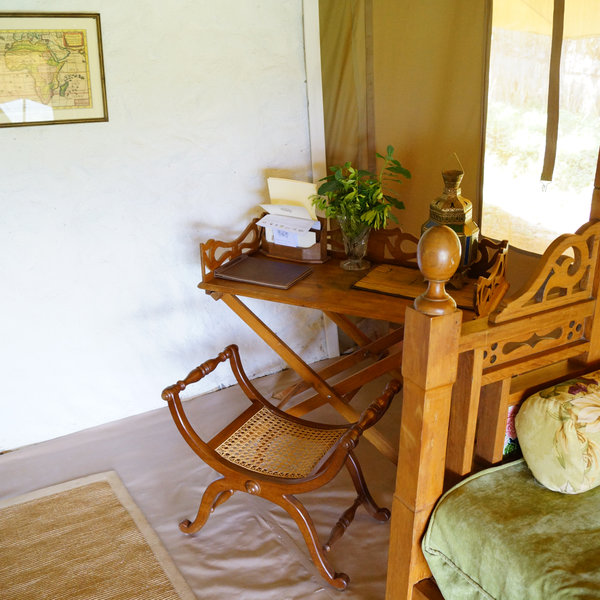
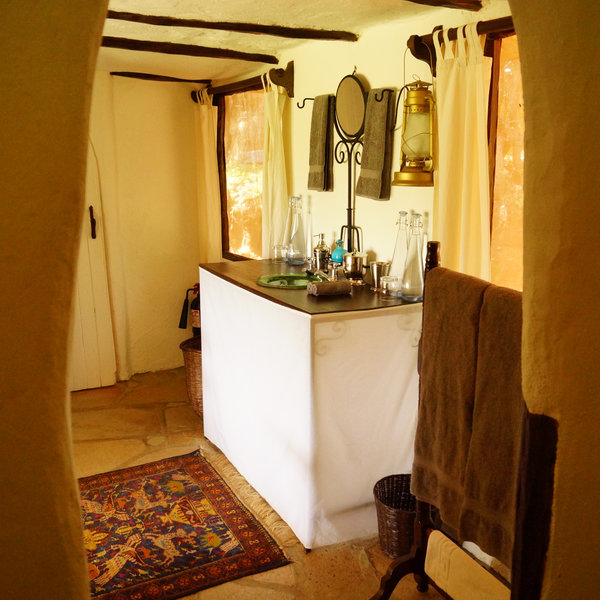
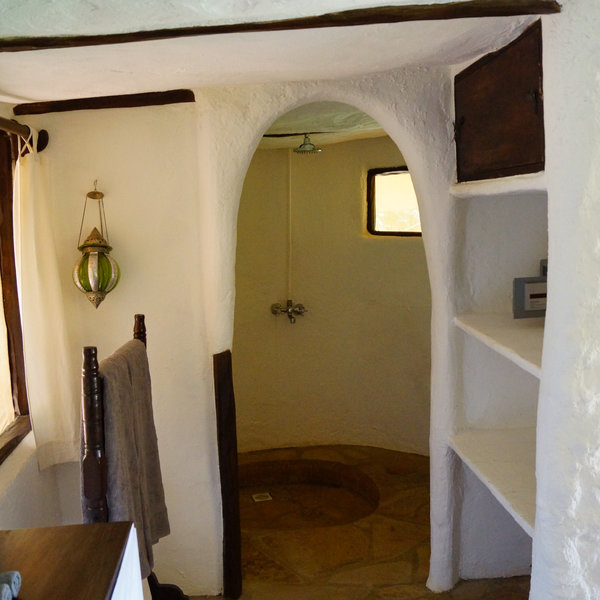
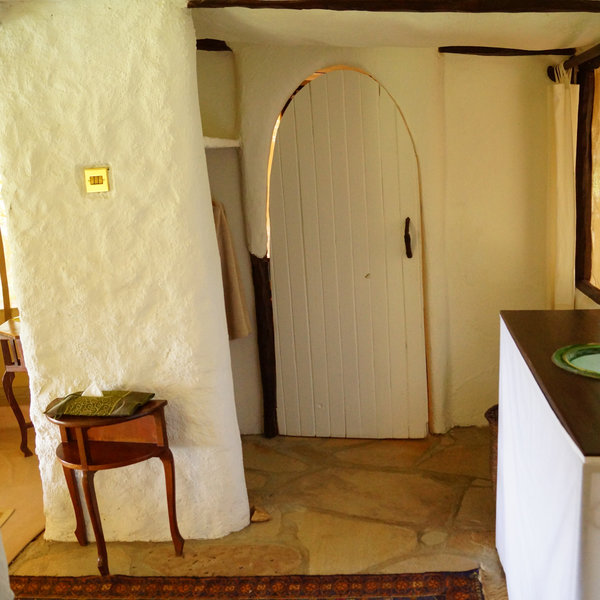
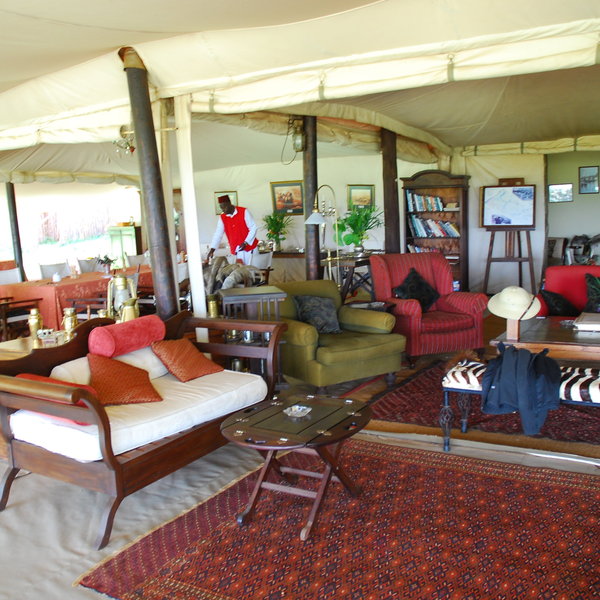
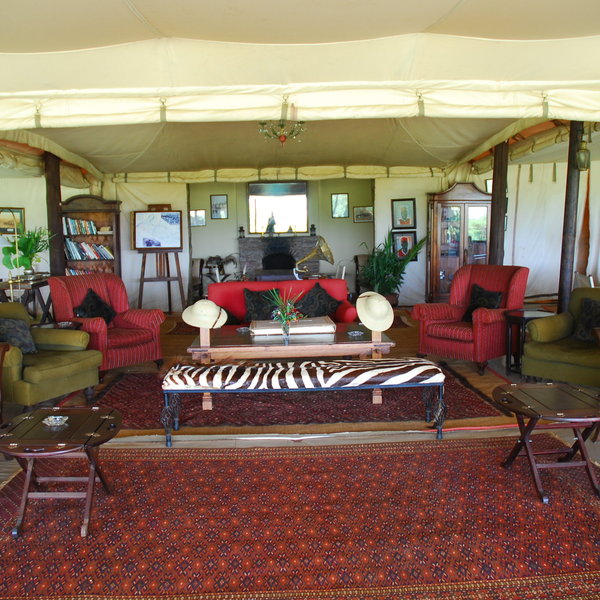
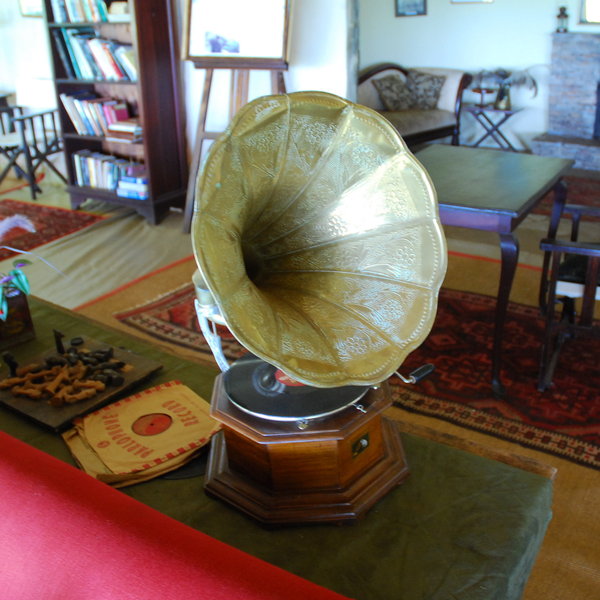
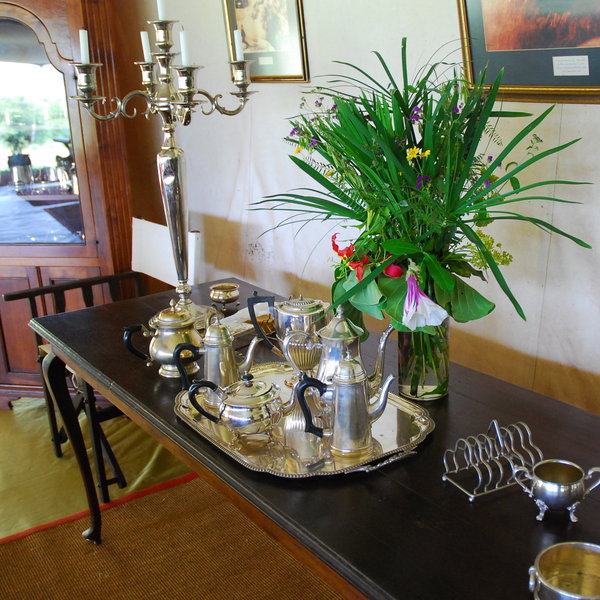
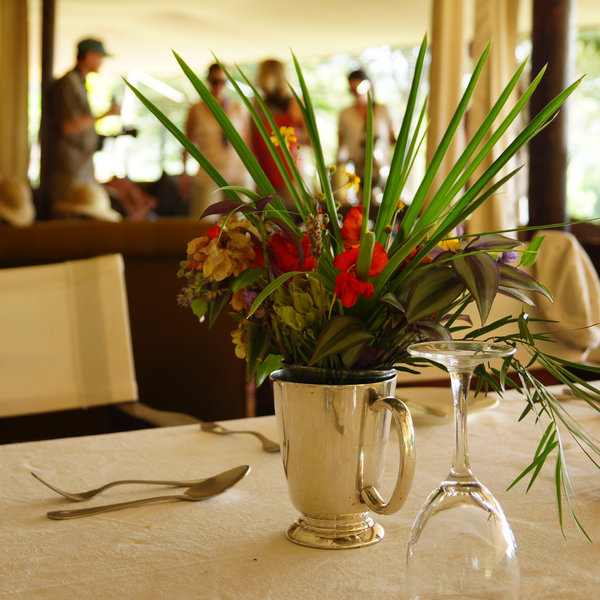
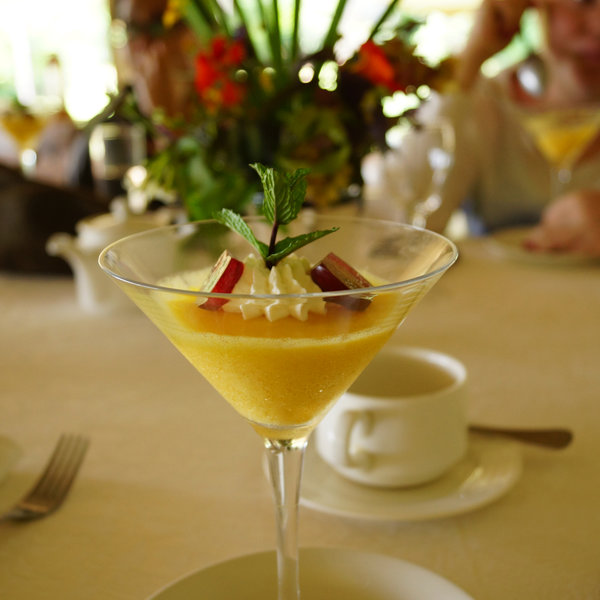
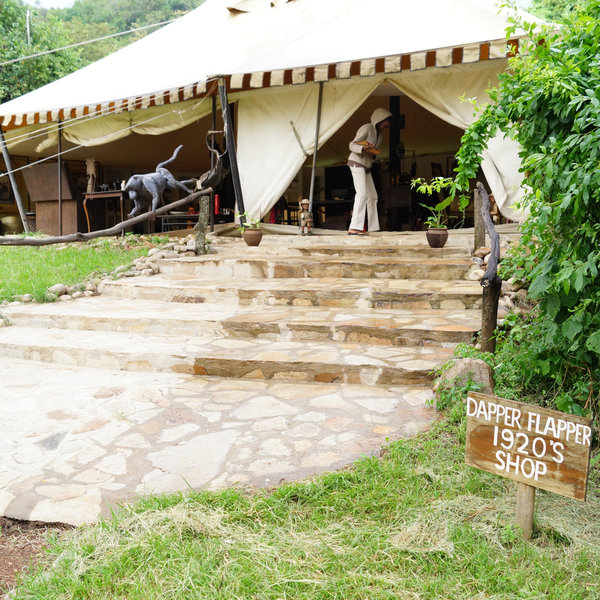
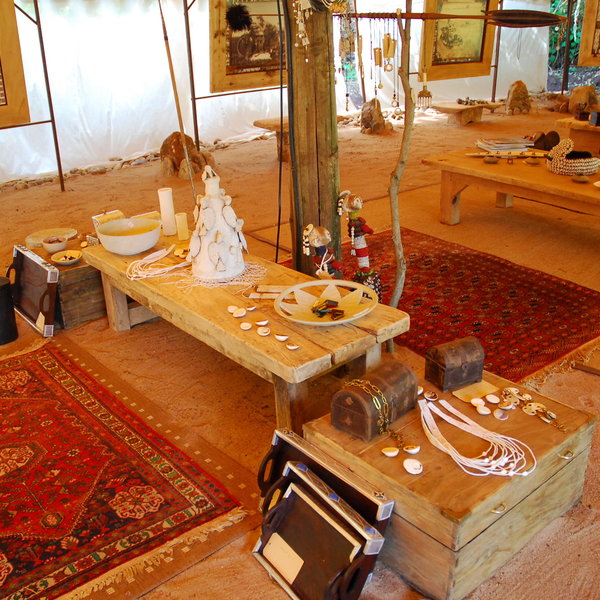
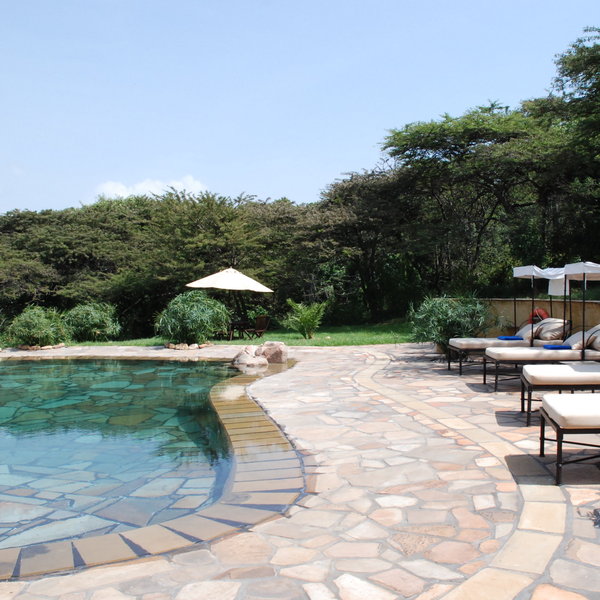
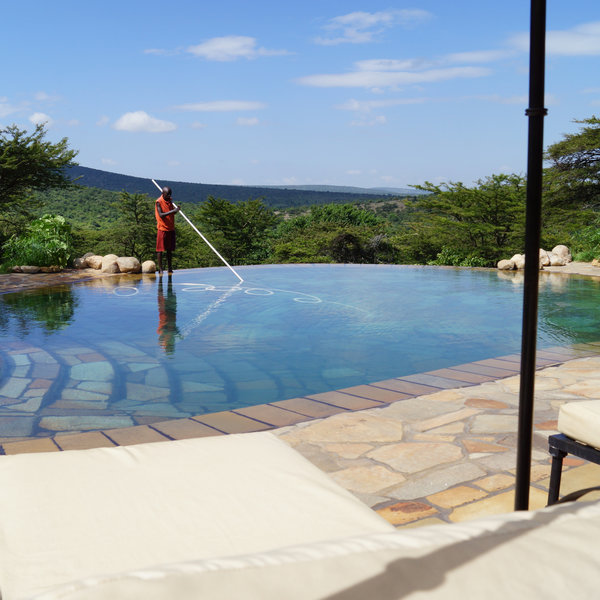
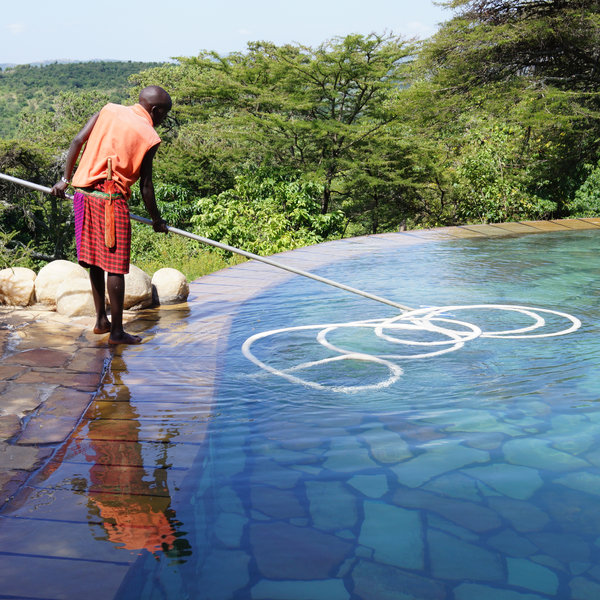
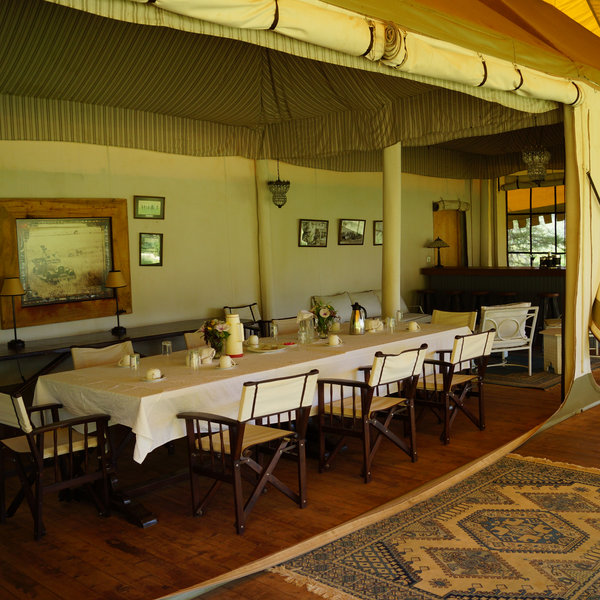
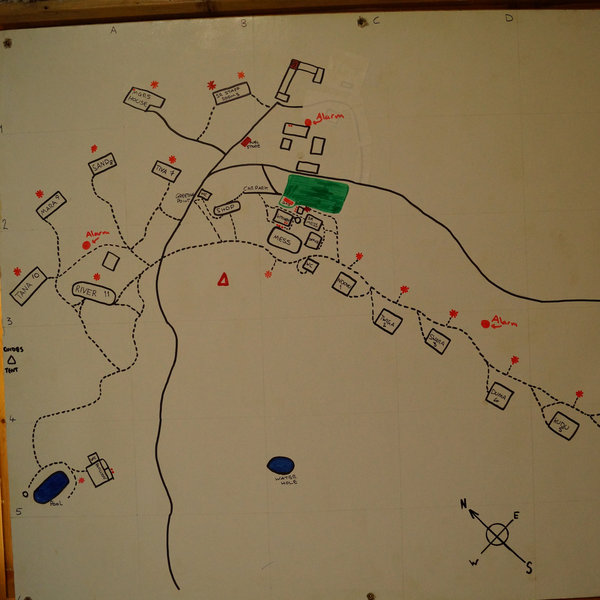
Expert Africa's gallery
When we travel we take lots of photos ourselves to give you a real and un-edited view of the safaris. See our 65 pictures and 1 videos of Cottars 1920s Camp to get the candid view.
View galleryCottars 1920s Camp: Our full report
Located on its own private conservancy Cottar's 1920s Camp is owned and run by Calvin and Louise Cottar who ...
... established this luxurious camp in the 1990s. Designed in an authentic 1920s style, the camp follows the iconic Out of Africa style and has access to a remote part of the Maasai Mara.
The main central area is a very large, open fronted mess and lounge tent, set in front of a manicured lawn. The comfortable lounge area is densely furnished with armchairs, coffee tables and sofas. Old sepia photos hang from the walls and brass lanterns from the ceiling - it really does feel like stepping back in time. At the other end is a large dining table where communal meals take place.
Other shared areas include a sparkling blue swimming pool with lovely views and plenty of sun loungers to relax on. This is at the far northwestern end of the camp, meaning it can take about 10 minutes to walk there from certain tents. There's another mess tent near the pool too, where meals can be served on special occasions.
There is also a large shop tent – the "Dapper Flapper" – stocking interesting but costly curios from all over East Africa, including some really beautiful hand made jewellery.
Cottar's has an organic herb and vegetable garden that supplies the kitchen and it uses solar- and wind-generated electricity as well as a generator. These initiatives have helped it achieve a Gold eco rating from Ecotourism Kenya - one of only a dozen similarly rated camps and lodges in Kenya.
Cottar's roomy guest tents are very widely spaced apart, and thus extremely private, and all have lovely tranquil views out over the bush. However distances in the camp are relatively great, meaning it can take a good five minutes to walk to your tent from the mess or vice versa. Although the camp is completely unfenced, and does occasionally have large mammalian visitors, you can usually walk around camp during the day unaccompanied. At night, however, askaris escort guests at all times. Each tent has a two-way radio for calling for an askari or asking for room service.
The tents comprise six twin- or double-bedded tents and four double-sized family tents in a separate area. They all follow the same 1920s theme. Each is furnished with a large double four-poster bed or twin four-poster beds draped in mosquito netting, with dark wood furniture. Old pictures, campaign furniture and brass gramophones set the scene. The overall look is aiming to be classic, although perhaps feels a little tired in places.
At the back of each tent the bathroom is a solid structure accessed directly from the bedroom, with a walk-in, plumbed-in shower and a separate flush toilet. Along with the rest of the tent, the bathrooms in particular could benefit from improved lighting as it can be rather dark in there.
Activities at Cottar's 1920s Camp include day and night game drives, safari walks, bush baths and bush meals. A visit to a Maasai village can also be arranged and there's a spa offering various treatments at additional cost. During our most recent visit in 2019, we didn’t find the guiding to be up to the standard we have previously experienced, especially for a camp with such a high price tag. We would hope the camp would return to offering a more consistent level of guiding in future.
Activities
4WD Safari
Birdwatching
Cultural excursion
Fly-camping
Guided walking safari
Hot air ballooning
Night drive
Private activities
Families & children
- Attitude towards children
- Cottar's attitude to children is very positive. Calvin and Louise Cottar have their own children, who have partly grown up in camp.
- Property’s age restrictions
- None.
- Special activities & services
- Nannies are available for babysitting services from the main camp's housekeeping staff.
In terms of activities angled towards kids, children often do a sort of "Maasai Warrior School" (and mums and dads often like to join in!), involving tracking footprints and scat, learning dances and songs in Maa, and practising skills such as spear-throwing, bow-shooting and fire-making.
Depending on the flexibility of the family, even quite young children can often be accommodated in these activities, which typically take place after lunch before the second game drive, or if it's too hot for that as an alternative to the second game drive. They sometimes incorporate a nature walk not far from camp, with an armed escort and suitably equipped guides/s, with a radio to call a vehicle at the end. - Equipment
- Cottar's have one baby cot with mosquito net, one high chair and one baby bath.
- Generally recommended for children
- The huge family tents work very well for children and the swimming pool is a bonus - though beware, there is no lifeguard and your children will need supervision, especially if there are other guests using it who are less keen on youngsters.
Food & drink
- Usual board basis
- Full Board & Activities
- Food quality
- Dining is communal, although guests can choose to sit to eat whenever they choose and it is not hosted by the managers. This can result in rather chaotic mealtimes, with different groups eating different courses – but it does make it more flexible for individuals.
The overall standard of food is good. Breakfast in camp offers the standard safari fare of cooked dishes, as well as cold continental choices. However most guests will leave camp early with a picnic breakfast to have in the bush.
Lunch is generally laid out as a buffet, with a selection of light dishes such as quiche, accompanied by a variety of simple salads.
Dinner is a set three-course menu. In 2019 we had soup and fresh bread to start, followed by a lovely fish curry and a fruit salad for pudding. - Dining style
- Group Meals
- Dining locations
- Indoor and Outdoor Dining
- Further dining info, including room service
- Breakfast can be served between 6.30 and 10am, lunch from 1.30pm until 2.30pm and dinner from around 7.30pm. In practice, all meal times are flexible. With an hour or two's notice, meals can be served by the pool or in front of your tent.
- Drinks included
- Depending on your accommodation option, drinks are either mostly included (with the exception of Champagne, fine wines and premium spirits) or paid for separately and settled at the end of your stay.
Our travellers’ wildlife sightings from Cottars 1920s Camp
Since mid-2018, many of our travellers who stayed at Cottars 1920s Camp have kindly recorded their wildlife sightings and shared them with us. The results are below. Click an animal to see more, and here to see more on our methodology.

100% success

100% success

100% success

100% success

100% success

100% success

100% success

100% success

100% success

0% success

0% success

0% success

0% success

0% success

0% success

0% success
Getting there
- Location
- Maasai Mara Conservancies, Kenya
- Ideal length of stay
- 3 nights
- Directions
- Cottar's 1920s Camp is a 10-minute drive from Cottar's airstrip, or around 1.5 hours from the busier Keekorok airstrip. One local airline flies to Cottar's airstrip, the rest to Keekorok.
- Accessible by
- Fly-and-Transfer
Sustainability
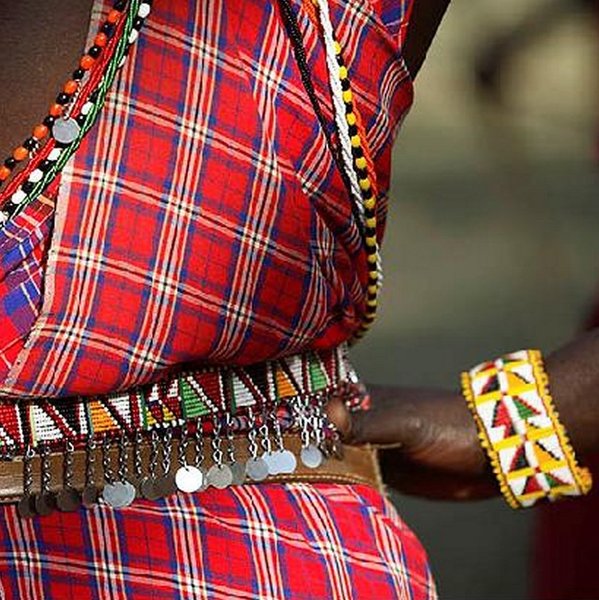
Re-creating traditional Maasai dining experiences
Designed in an authentic 1920s style, Cottars Camp is a family owned business which takes pride in its holistic approach to environmental conservation. The Cottars` biggest strength is its commitment to make its visitors reconnect with the nature through authentic and sustainable meal experiences.
The lodge grows organic herbs and vegetables in its own garden which, apart from a providing a better-tasting food with a higher nutritional value, also minimises the environmental impact due to the reduction of chemicals usage. Moreover, drinking water is exclusively extracted from a natural spring nearby, thus limiting the environmentally-heavy cost of importation.
Cottars Camp is also taking the food experiences to a new level with the bush meal adventures. Surrounded by the African wildlife, guests can enjoy traditional dishes while observing the natural habitat of Maasai Mara. The lodge also offers guests opportunities to participate in the gardening activities. By helping the local staff grow and cultivate the plants, tourists have the chance to see where the organic ingredients are coming from.
This initiative has been certified by Ecotourism Kenya with Gold Eco Rating and by Green Globe award for environmental practices
See more great sustainability projects in Kenya
Communications
- Power supply notes
- There is a generator to ensure 24 hour power.
- Communications
- There is WiFi at the mess tent. Mobile phone coverage around the camp is limited.
- TV & radio
- In the case of major sporting events a plan can always be made - either using the TV in the private house, or at the staff quarters.
- Water supply
- Other
- Water supply notes
- Water is sourced from a spring, which gives very pure, slightly warm water. A South African filtration system purifies it further and produces hot and cold, still or carbonated drinking water. The water, which is regularly tested for purity, fills the jugs in the rooms and is used for drinking water on game drives, in Cottar's own, branded aluminium water bottles. These can be filled from your tent or from the dispenser in the mess tent.
Health & safety
- Malarial protection recommended
- Yes
- Medical care
- First aid kits, a trauma bag and a number of first-aid trained guides area available. In a serious emergency, their own airstrip is a few minutes drive away, and a helicopter can land right in the camp.
- Dangerous animals
- High Risk
- Security measures
- There are day and night askaris around the camp.
- Fire safety
- There is a guests' health and safety manual, good numbers of fire extinguishers, frequent fire training and firebreaks around the camp.
Useful info
- Disabled access
- On Request
- Laundry facilities
- Laundry is included in the rate. It's hand-washed, line-dried and returned ironed. Underwear can (unusually) be included).
- Money
- Foreign exchange isn't offered as very little cash is kept on site.
There are safes in the bathroom areas at the back of each tent. - Accepted payment on location
- Most currencies can be accepted, including US Dollars, Euros, Pounds Sterling and Kenyan Shillings. Credit cards are also accepted (MasterCard and Visa, not Amex) with no surcharge. Tips can be paid by credit card and will be paid to the staff in cash.
Plan and book your trip with Expert Africa
All of our trips are tailor-made, so we'll always adapt them to suit you. Talk to an Expert and let us plan and arrange your perfect trip.

Talk to an Expert
Call or email us now! We’ll match you with the Specialist in our team who is best suited to help you. Then together we can start planning your trip.

Set up your itinerary
Based on our experience and your ideas, your specialist will create a detailed, costed itinerary. We’ll refine it together, until we have a trip that you’re perfectly happy with.

Prepare for your trip
The same Specialist will make the seamless arrangements for your trip, send you detailed travel documents, and be available to answer any questions before you depart.

Travel with peace of mind
After you set off, you’ll be cared for by our partners in Africa, most of whom have worked with Expert Africa for decades. And if you ever need us urgently, we’re available 24/7.

When you return
We love to learn about your trip, and so will always be grateful if you’ve the time to give feedback to your Specialist when you return.
Cottars 1920s Camp's location
Look closer at the environment and surroundings of Cottars 1920s Camp.
Excursions from Cottars 1920s Camp
Optional extra day-trips and excursions possible whilst you're staying at Cottars 1920s Camp. Talk to us: these are usually best arranged before you go.
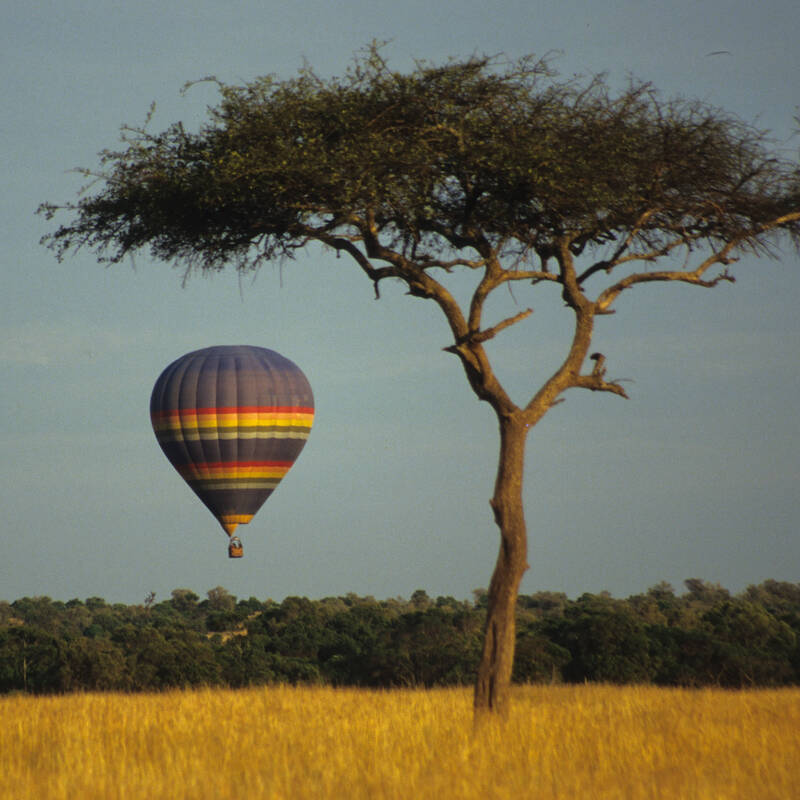
Balloon flight over the Mara
3 hours in total - morning only
With the sun rising over the Loita Hills, you scramble into the balloon basket for the start of a once-in-a-lifetime experience. You’re about to go drifting with the breeze above the trees and plains of one of the world’s greatest wildlife regions.
More about Balloon Safari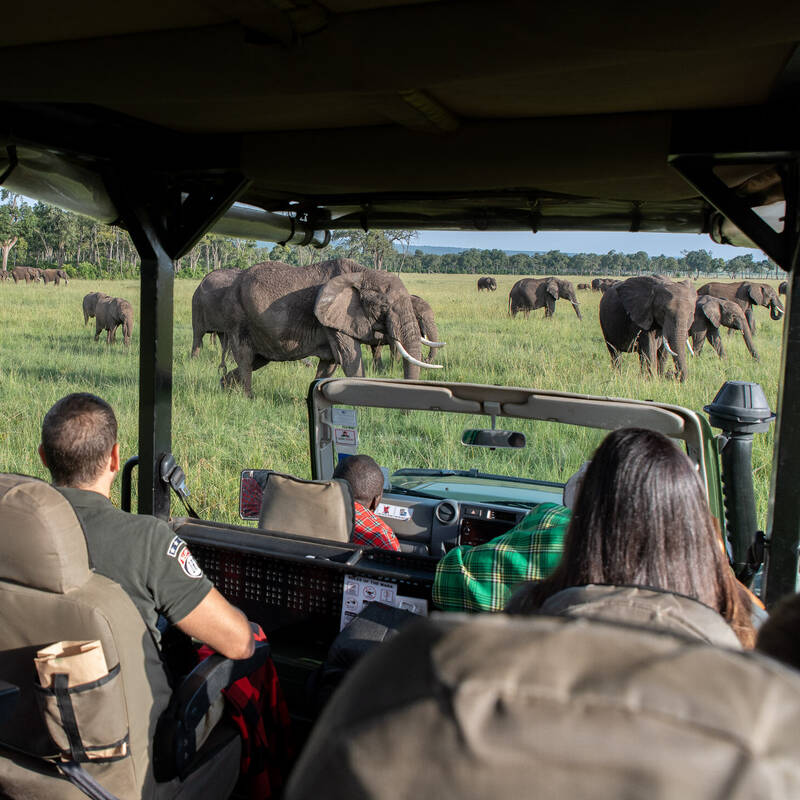
Safari in Maasai Mara National Reserve
All day from sunrise to sunset
If you're not staying in the Maasai Mara National Reserve itself, you're likely to be staying in one of the outstandingly wildlife-rich Maasai-owned private conservancies just outside the reserve boundary. A full-day game drive in the reserve gives you the chance to visit the Mara River and see some of the reserve's fabled wildlife locations.
More about Maasai Mara SafariOther lodges in Maasai Mara Conservancies
Alternative places to stay in this same area.
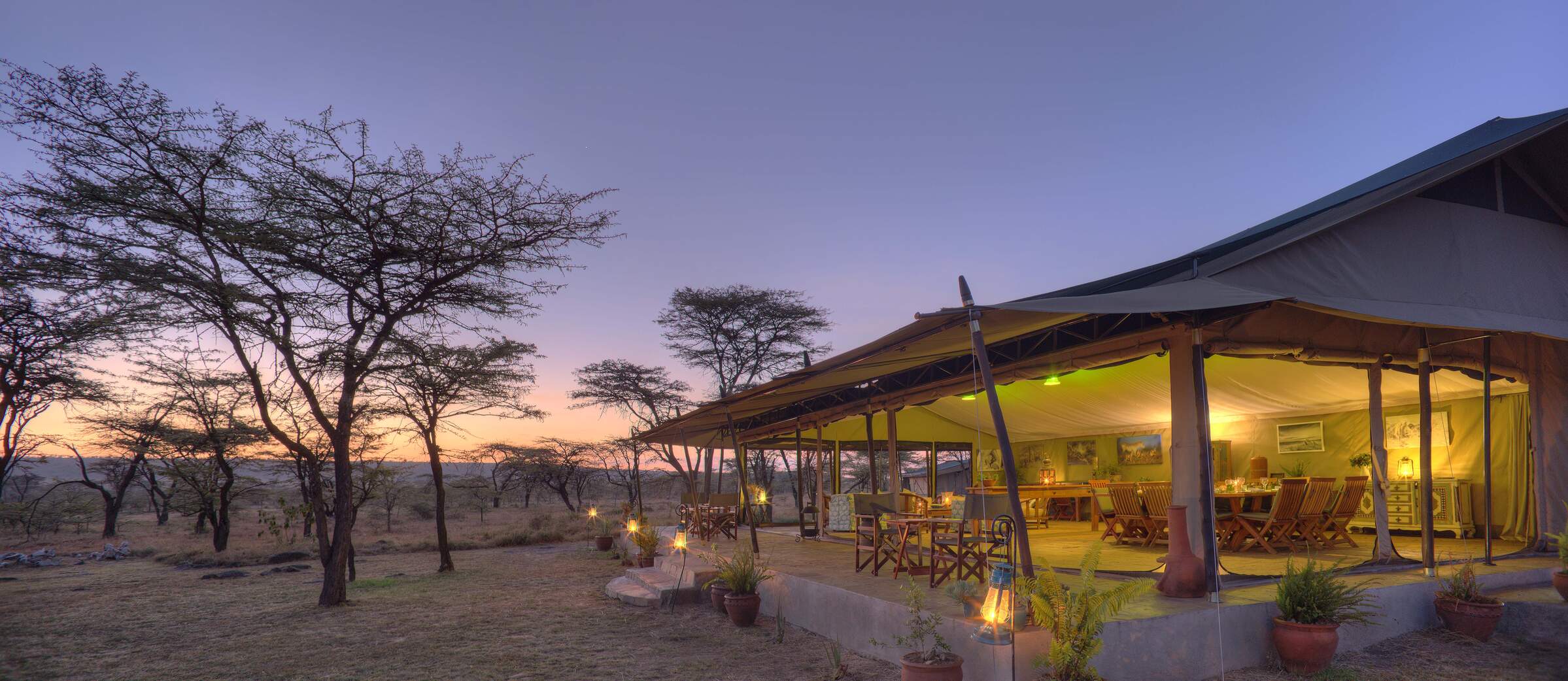
Kicheche Bush Camp
Kicheche Bush Camp is a smart and intimate tented camp with a relaxed atmosphere and the perfect base in the Mara for keen photographers.
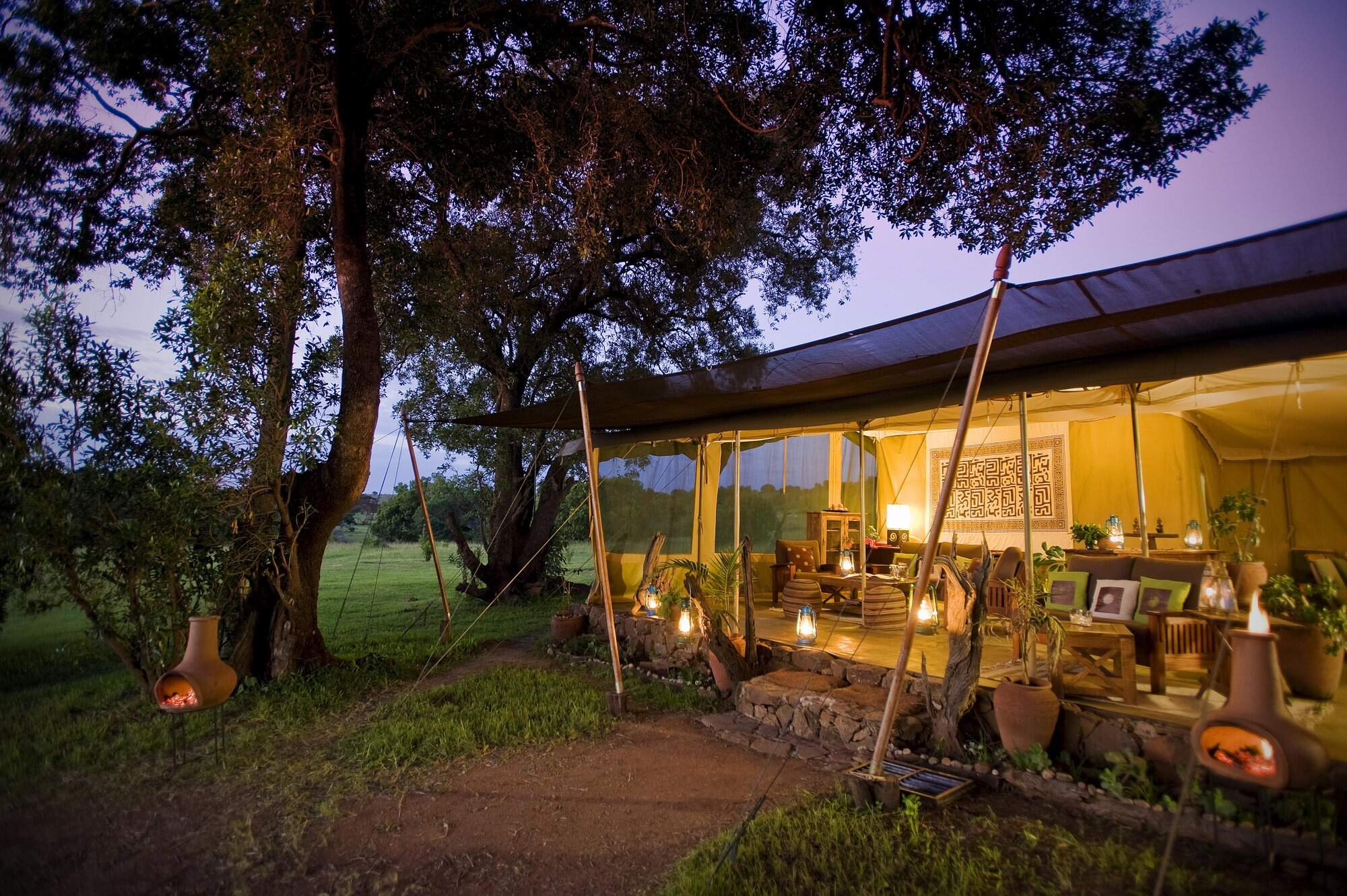
Kicheche Mara
Kicheche Mara Camp has just ten tents and a rustic and comfortable feel. It is set by a stream in a pretty area of the Mara ecosystem's Mara North Conservancy.
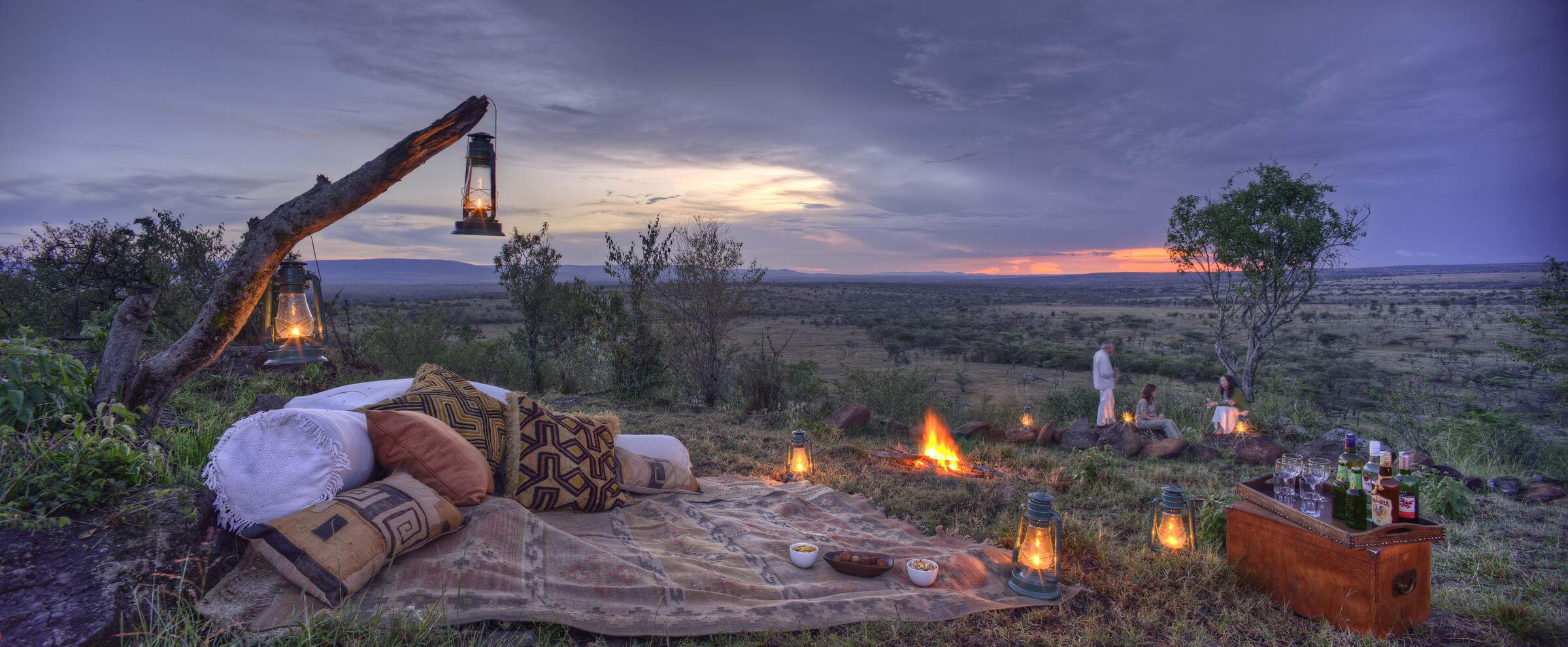
Kicheche Valley
Kicheche Valley is a boutique tented camp in a wooded district of the Mara ecosystem's Naboisho Conservancy, with plenty of wildlife in the area.
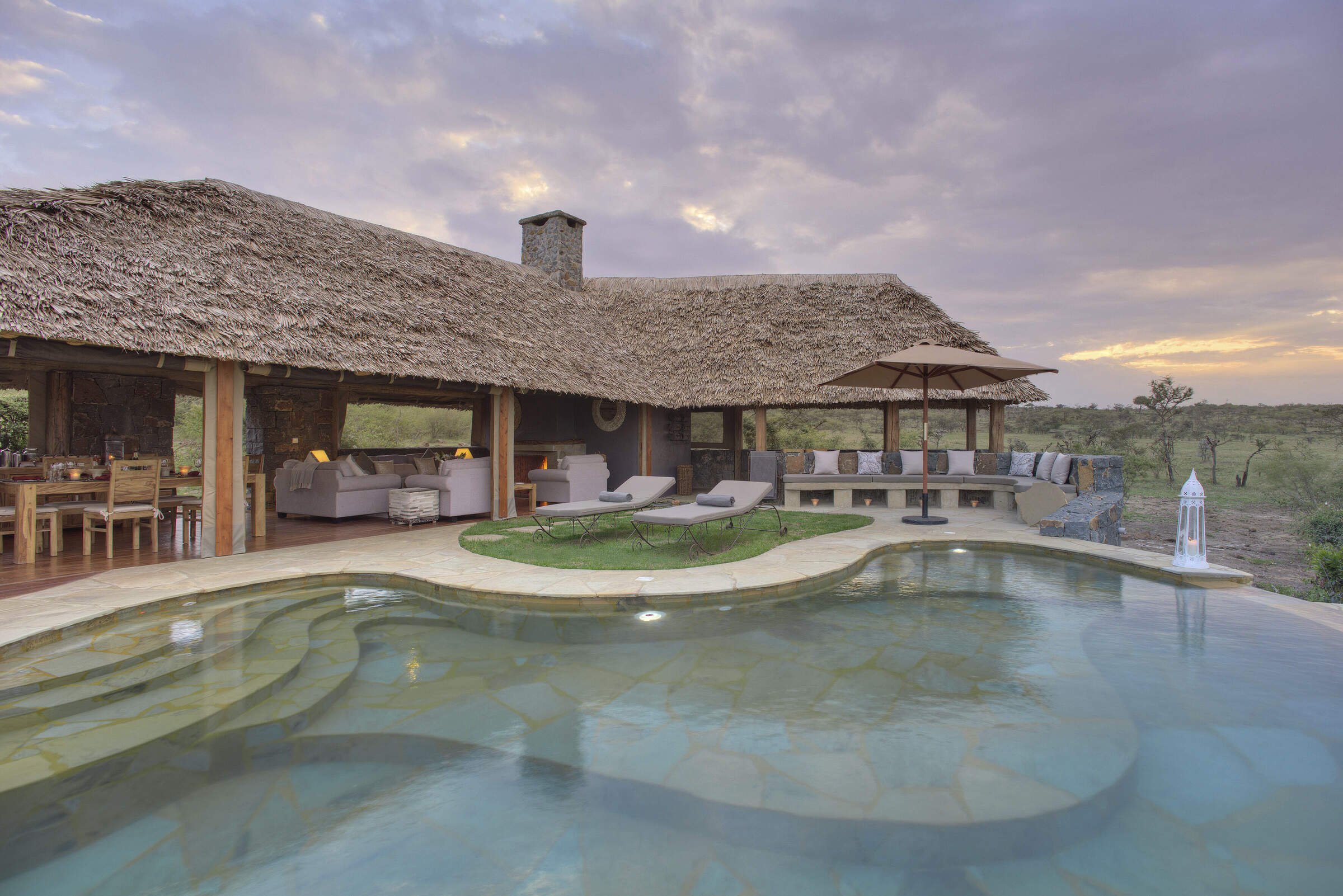
Naboisho Camp
Naboisho Camp is one of the most luxurious of the handful of camps in the Naboisho Conservancy. It offers day and night game drives, game walks and full creature comforts in the bush.
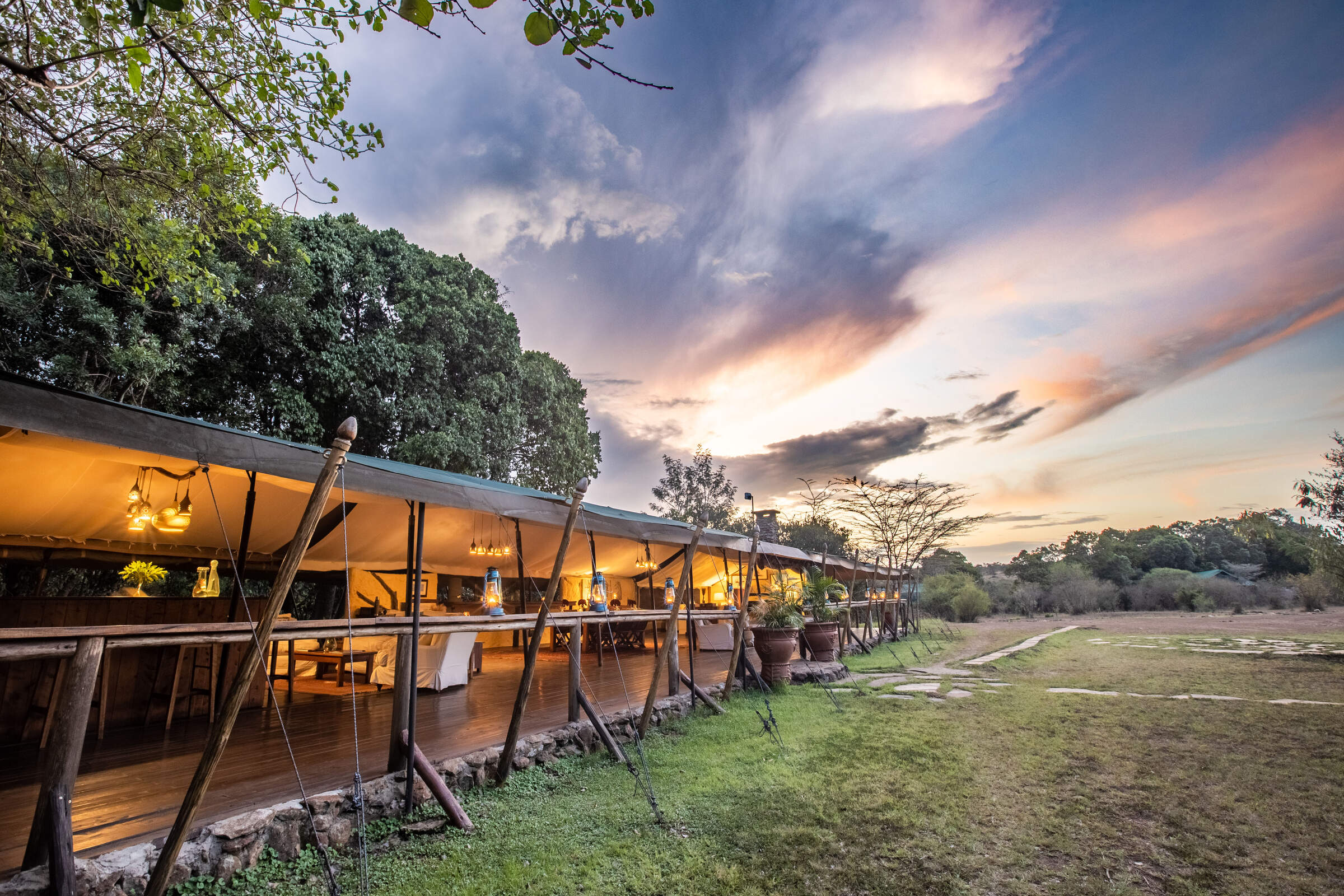
Offbeat Mara
Offbeat Mara is a small traditional camp that appeals to safari traditionalists, located in one of the Maasai Mara’s quiet conservancies.
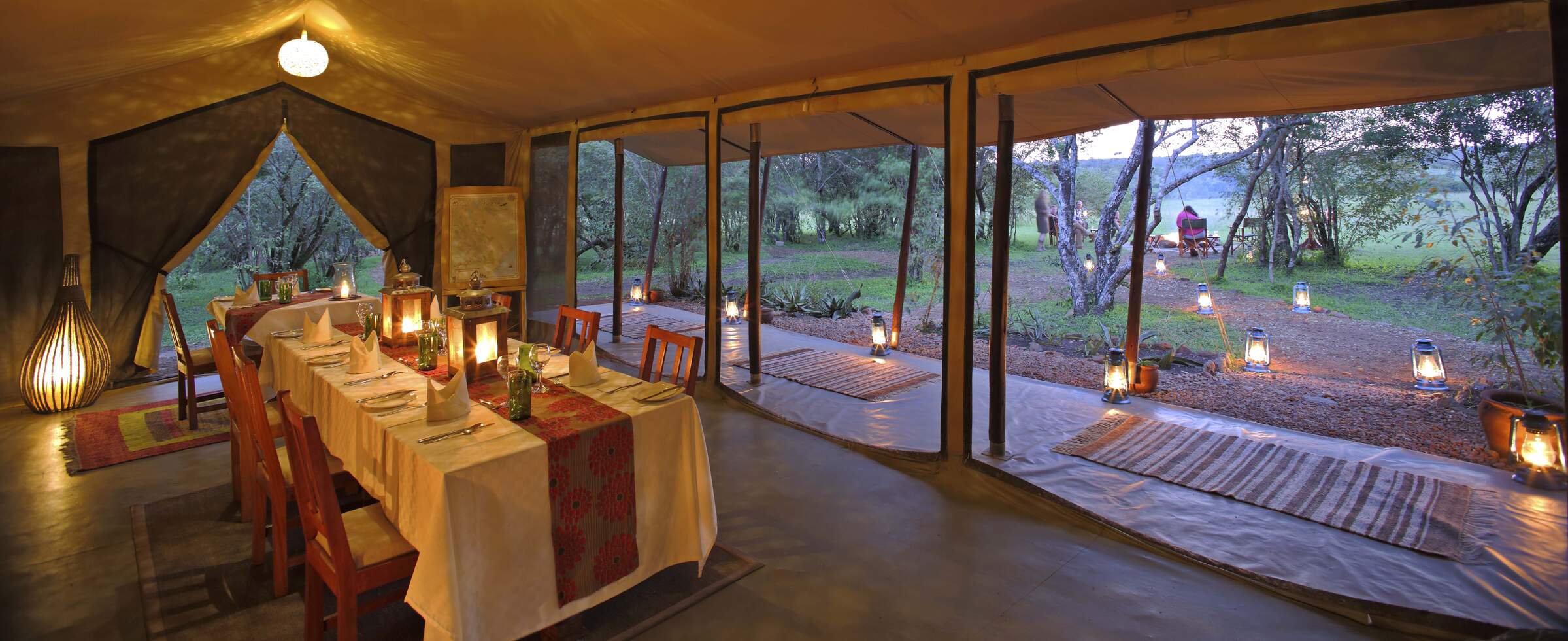
Encounter Mara
Encounter Mara is located in the private Naboisho Conservancy – a game-rich area of the Mara ecosystem – and offers a contemporary take on the traditional, low-impact luxury safari camp.
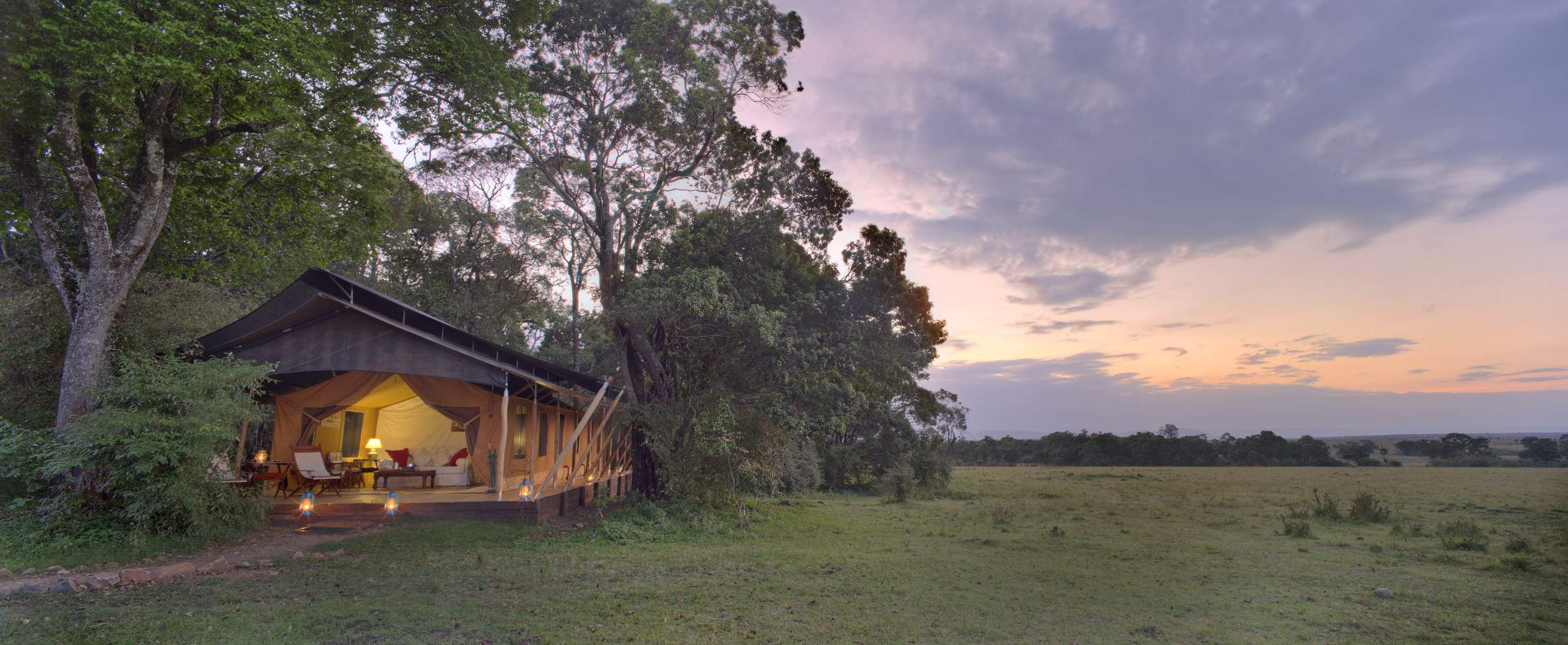
Elephant Pepper Camp
Elephant Pepper Camp is a small 10-tent bush camp, put together in the traditional "campaign" style, and including a large honeymoon/family tent.
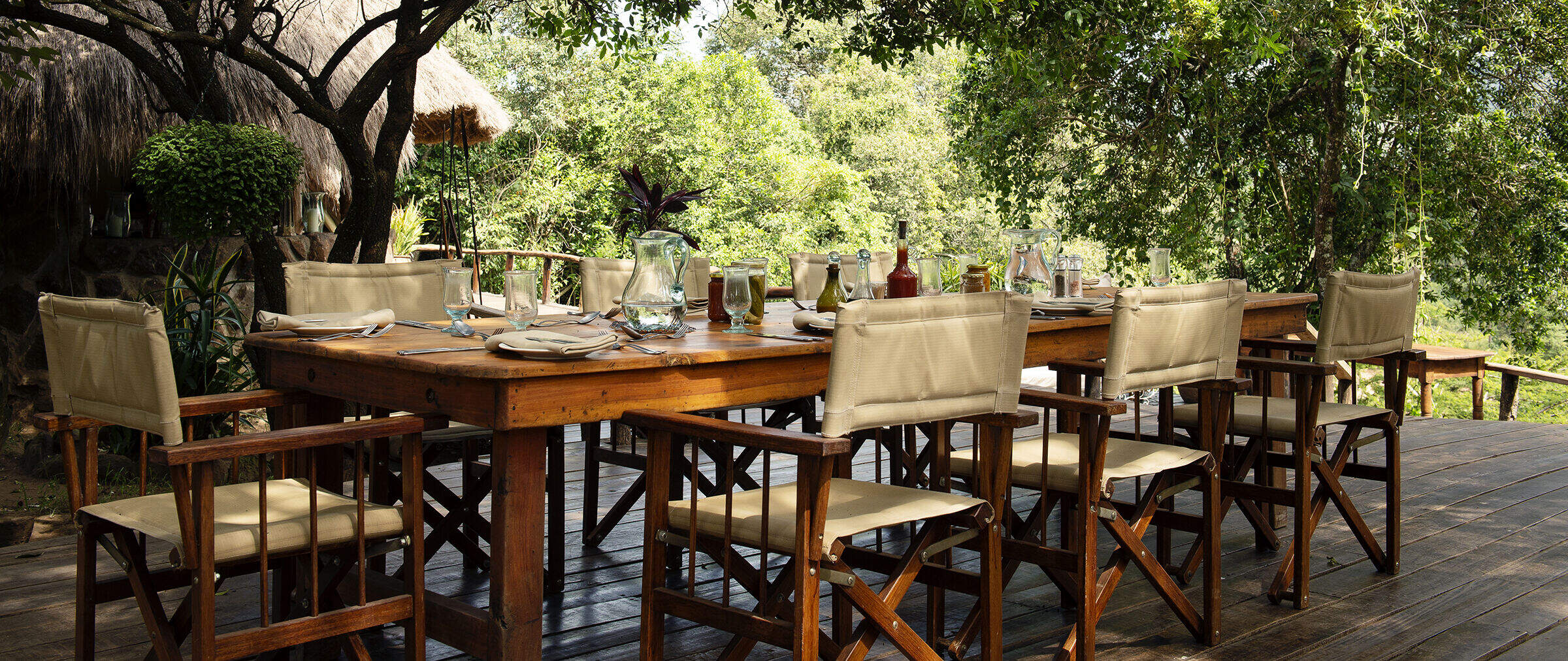
Serian
Serian is a luxury tented camp on the east bank of the Mara River in the Mara North Conservancy. It is the sister camp of Ngare Serian, on the west bank.
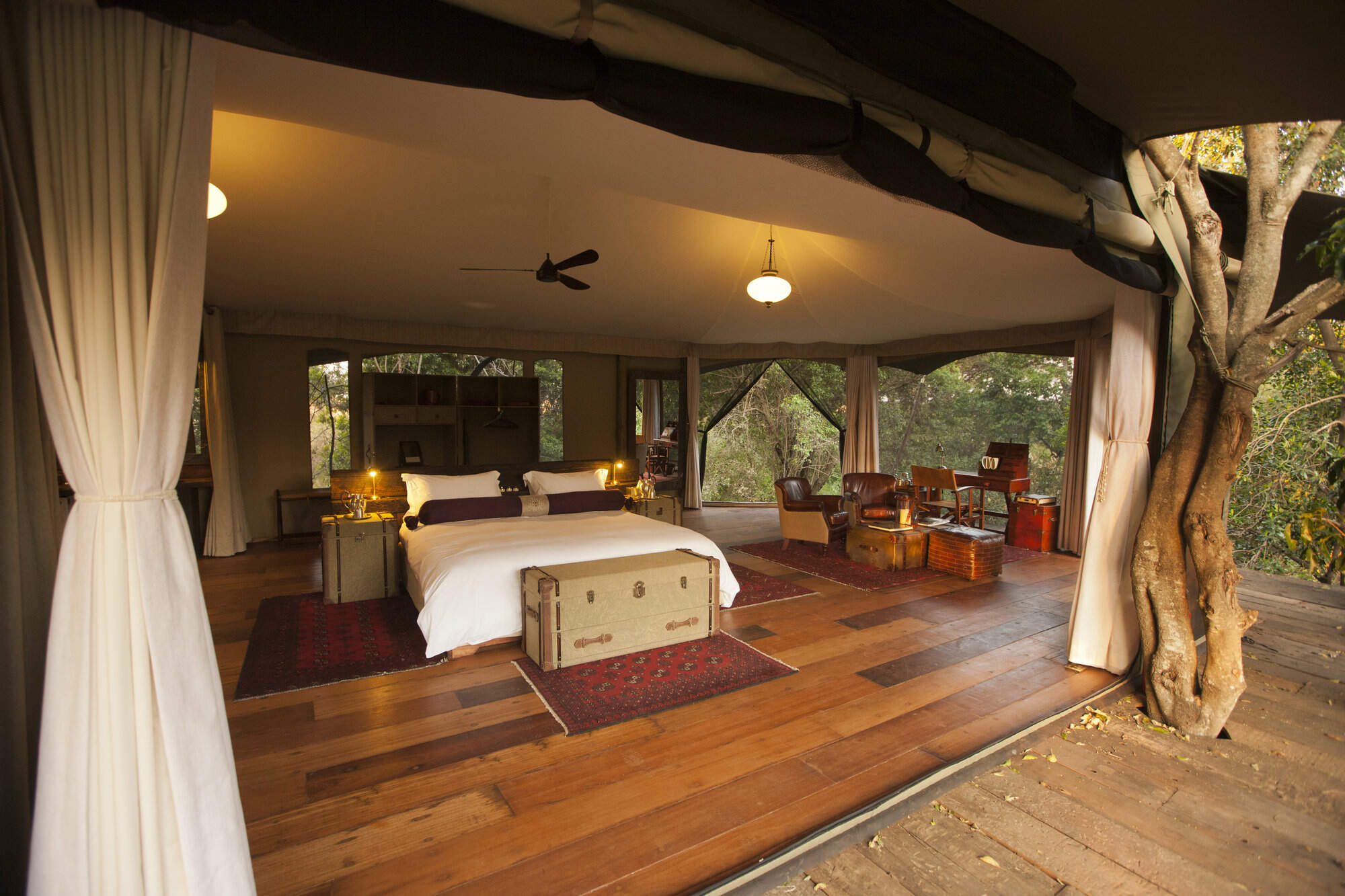
Mara Plains Camp
Mara Plains is one of the very best camps in the Mara ecosystem. Located in the Olare Motorogi Conservancy, just outside the Mara reserve, it has access to three wildlife-viewing areas.
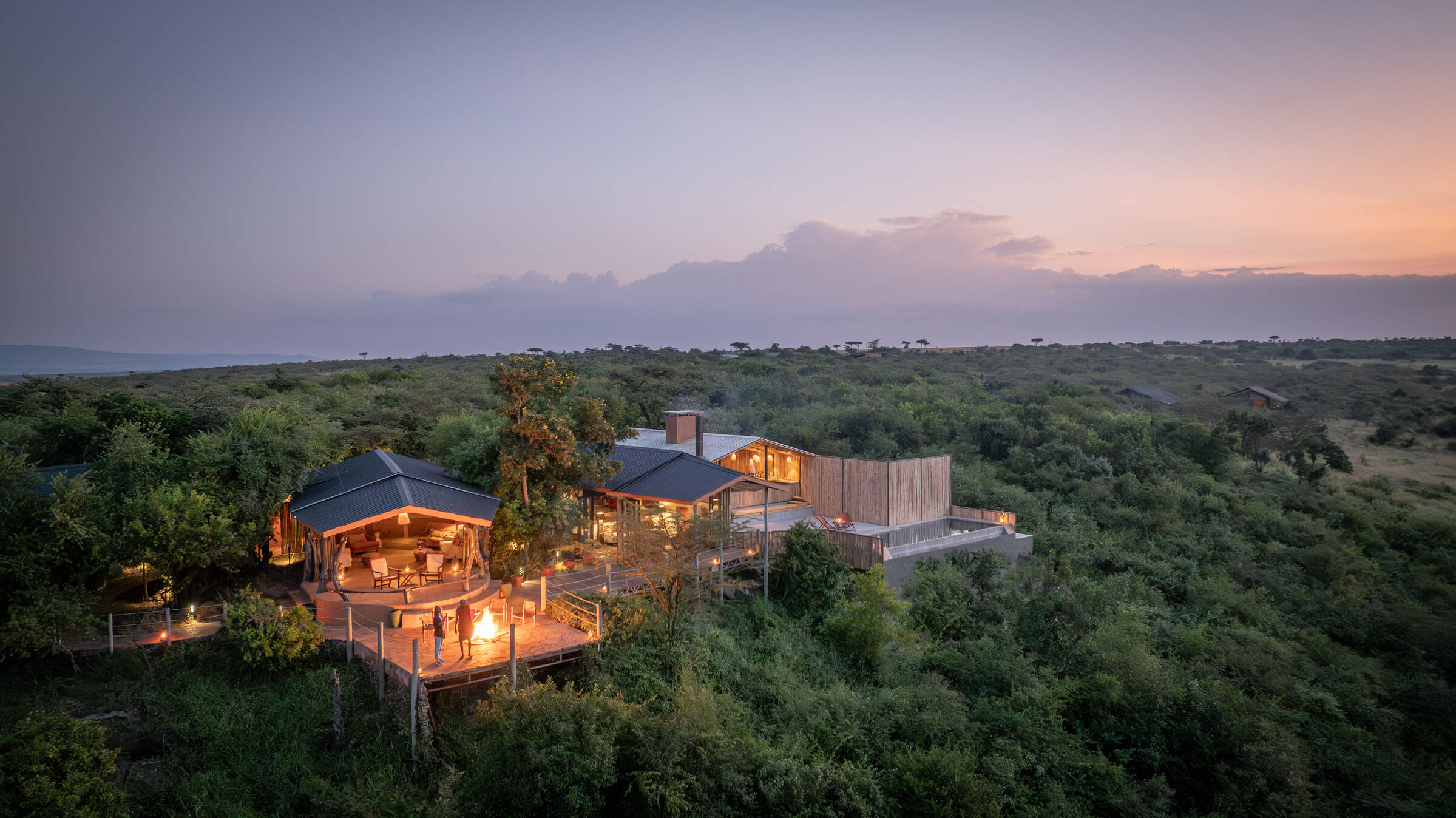
Basecamp Eagle View
Basecamp Eagle View is a community-focused safari camp in the Naboisho Conservancy, with a strong emphasis on responsible tourism and a spectacular location.
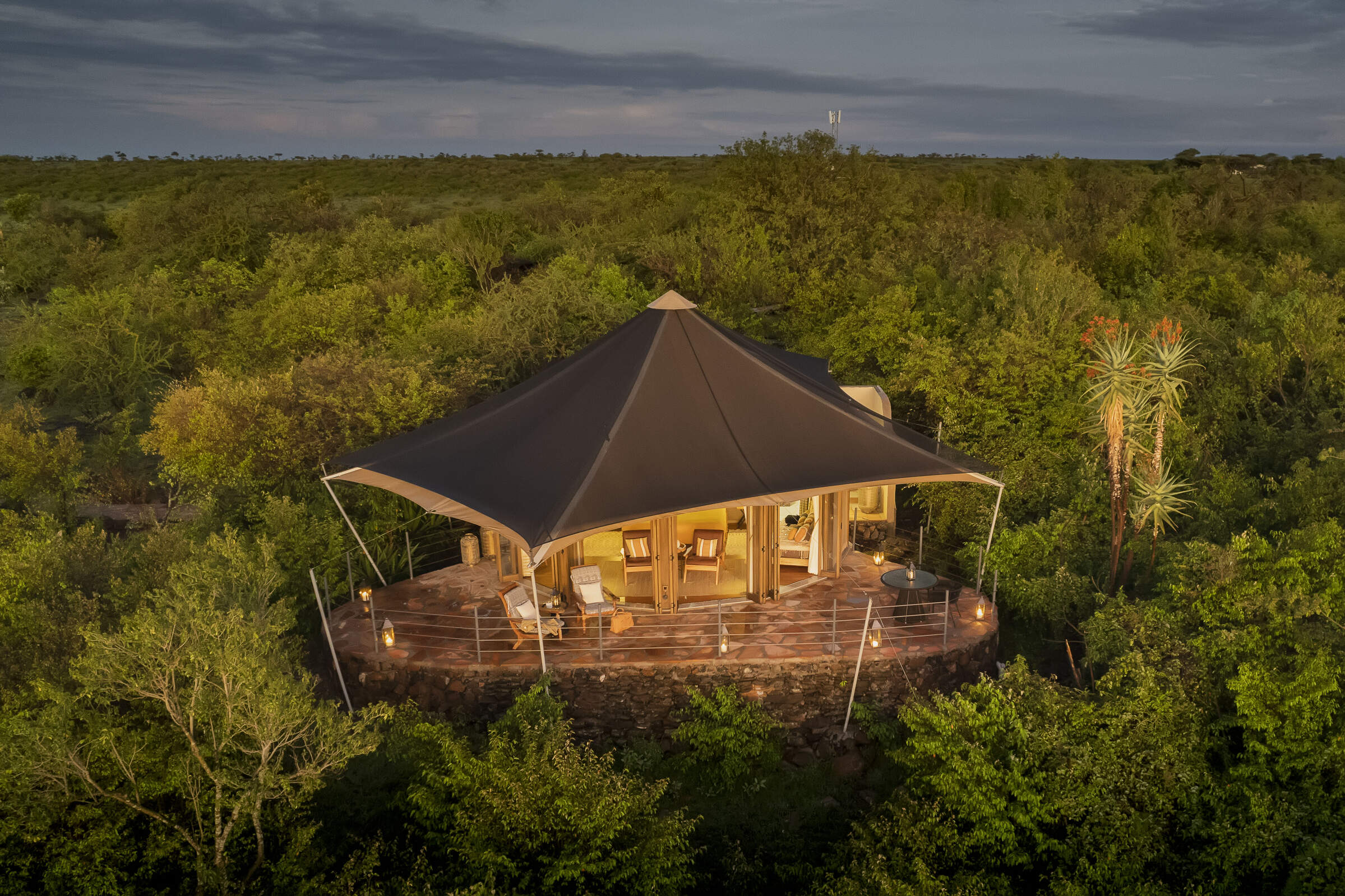
Hemingways Ol Seki
Magnificently located tented lodge on a bluff looking south across the Naboisho Conservancy toward the Maasai Mara National Reserve.
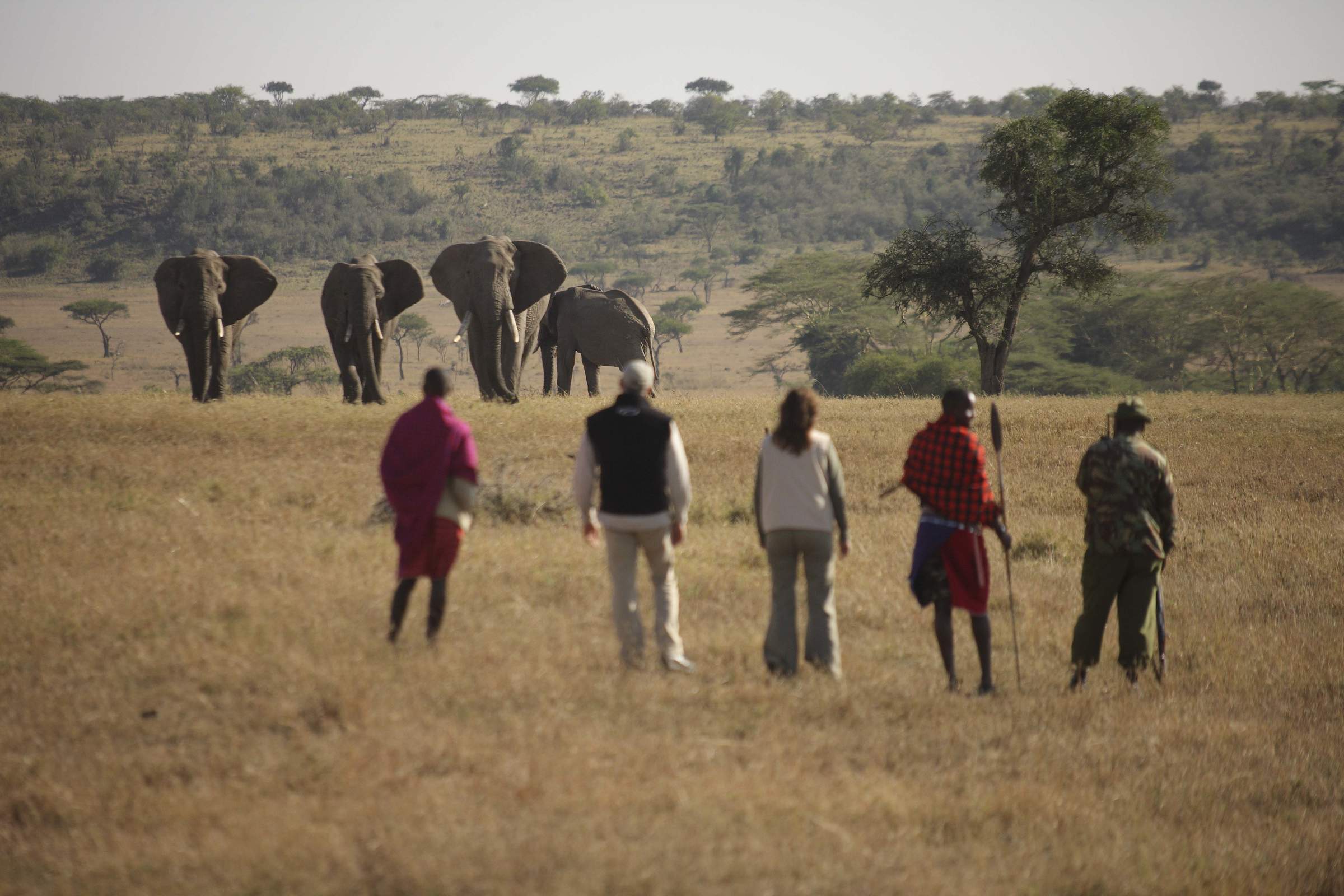
Kicheche Fly Camp
Kicheche Walking Wilderness Fly Camp is a temporaray dome tent camp set up for participants in Kicheche's two-day walking safari between Kicheche Valley and Kicheche Bush Camp.
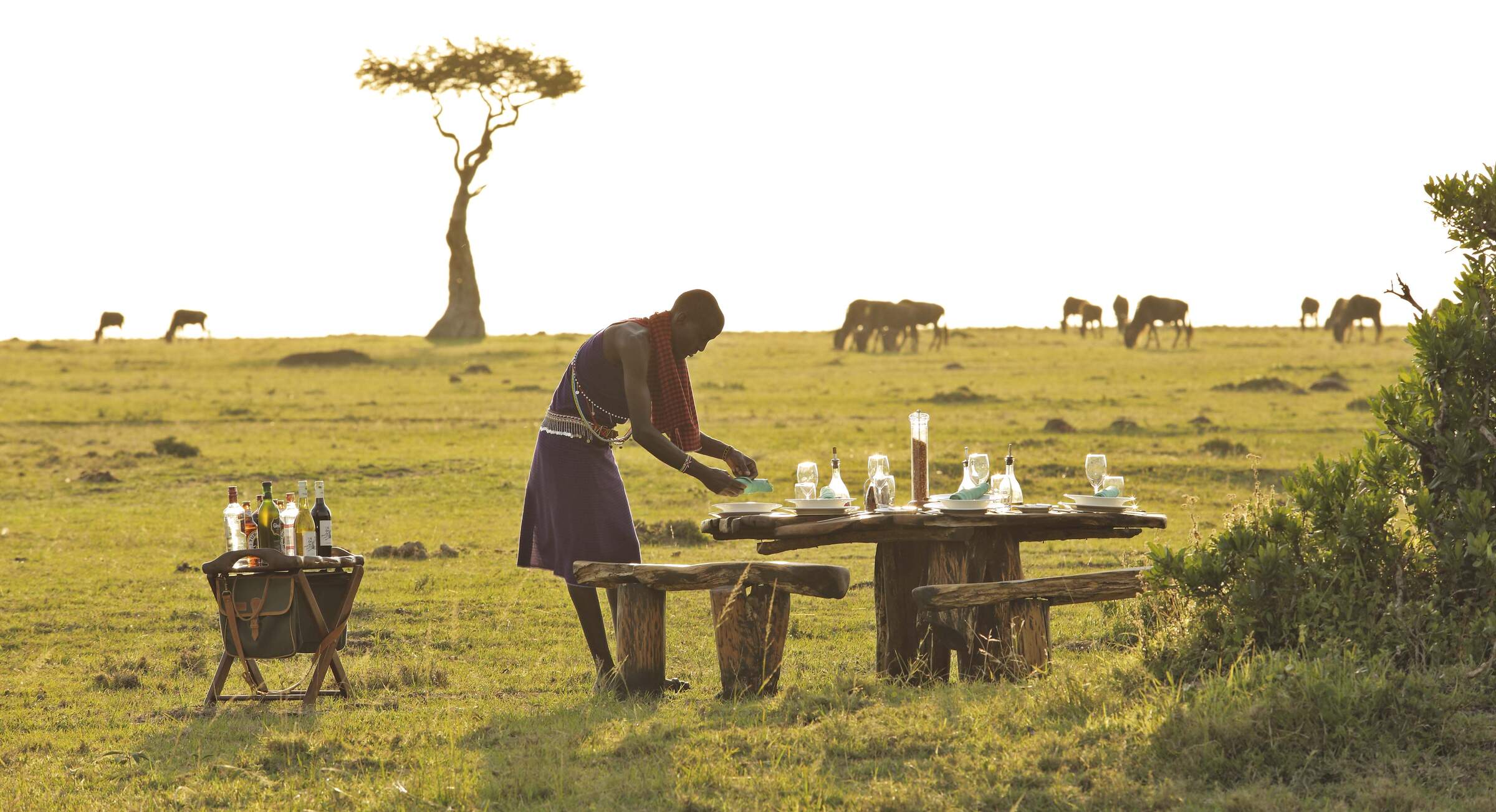
Saruni Wild
Saruni Wild is a rustic and traditional safari camp in the Lemek Conservancy, with just three tents and limited electricity.
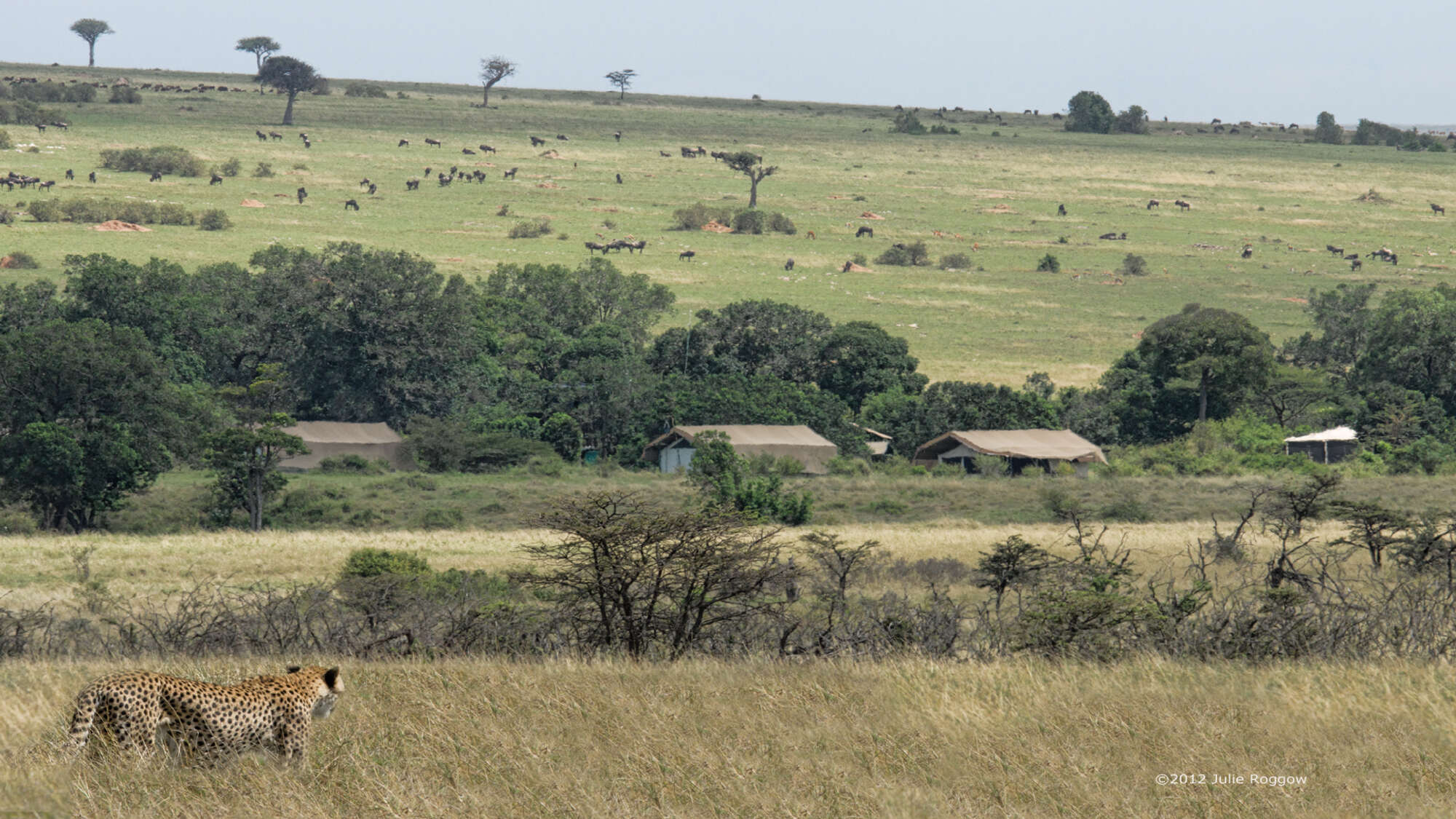
Porini Lion Camp
Porini Lion Camp is a pioneering, community focused eco-camp, with excellent guides and game viewing, in the predator-rich, Olare Motorogi Conservancy.
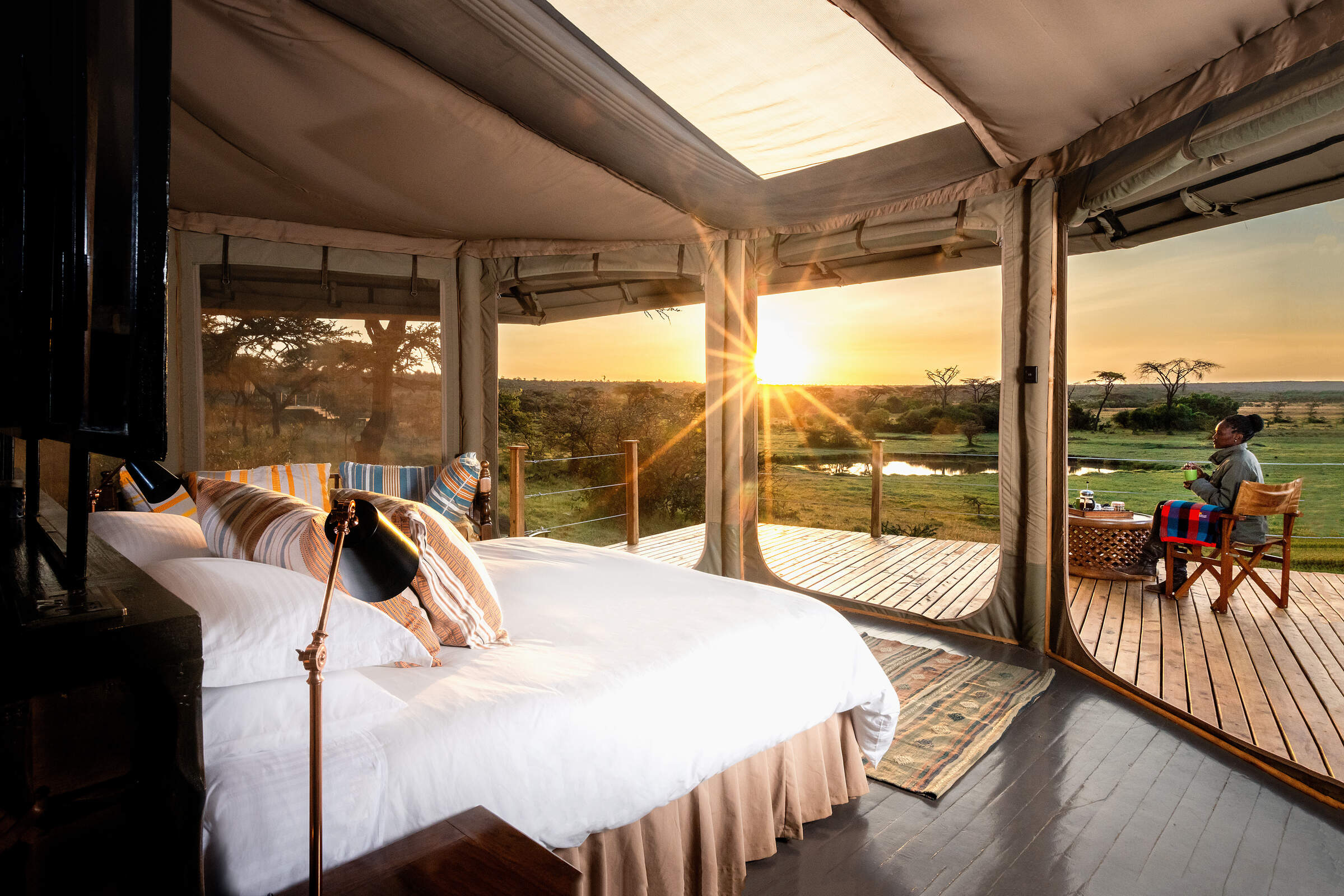
Basecamp Leopard Hill
With six beautiful tents, Basecamp Leopard Hill is a smart safari camp in the Naboisho Conservancy in the Maasai Mara ecosystem.
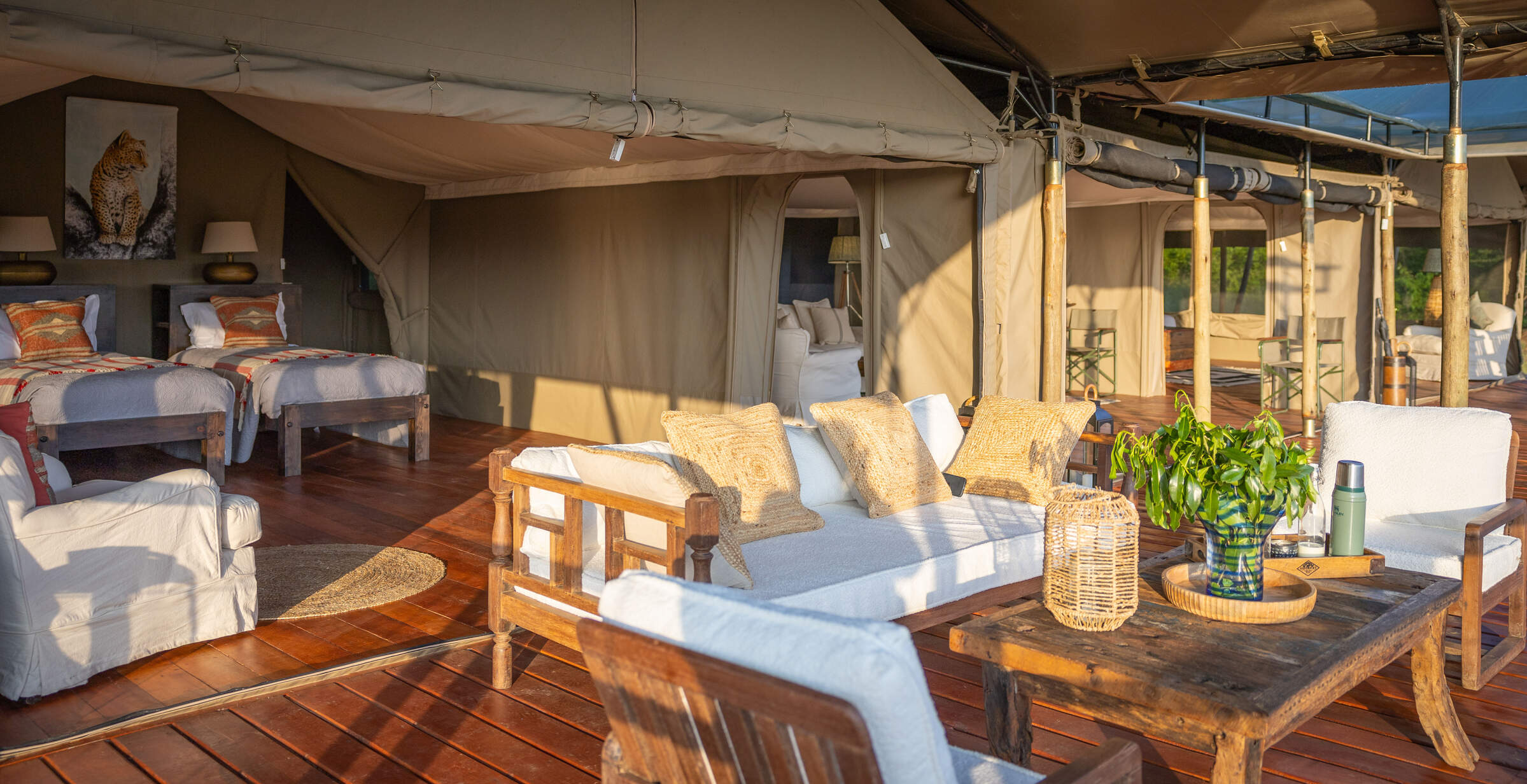
Offbeat Ndoto
Small and intimate, Offbeat Mara is set in a valley above the (often dry) Olare Orok River within the Mara North Conservancy.
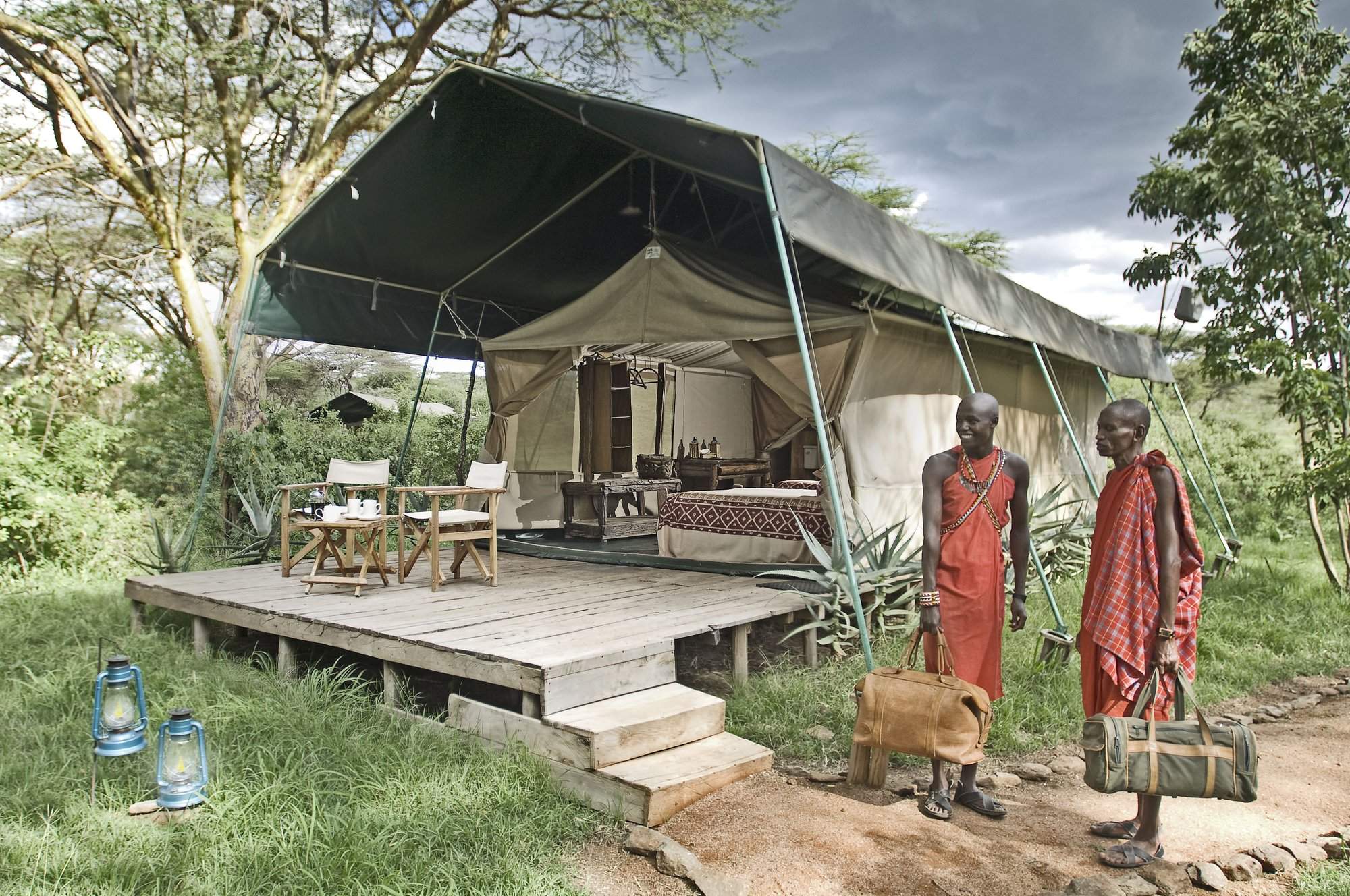
Porini Mara Camp
Porini Mara Camp is a small, pioneering eco-camp in the first private conservancy in the Mara region, with comfortable accommodation and a range of activities.
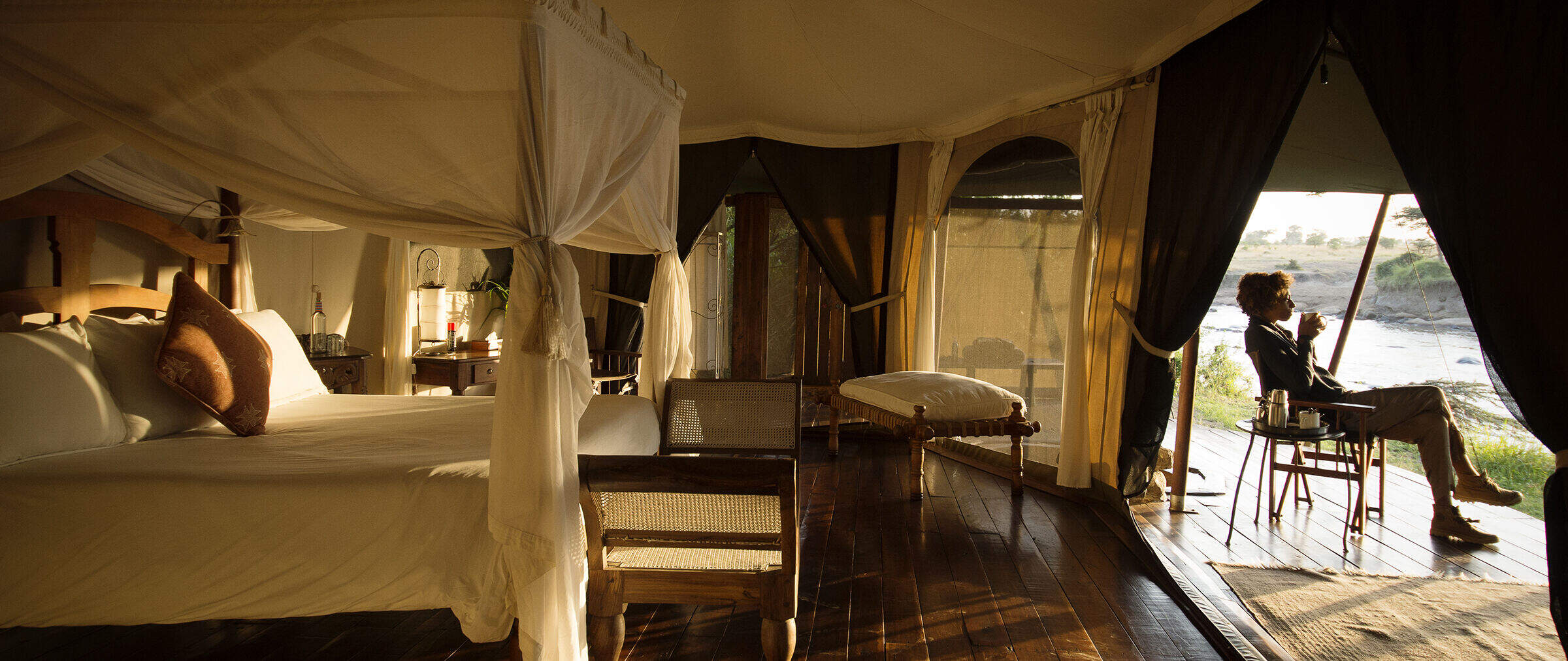
Ngare Serian
The luxurious Ngare Serian and its sister camp Serian face each other across the Mara River on the western side of the Mara North Conservancy
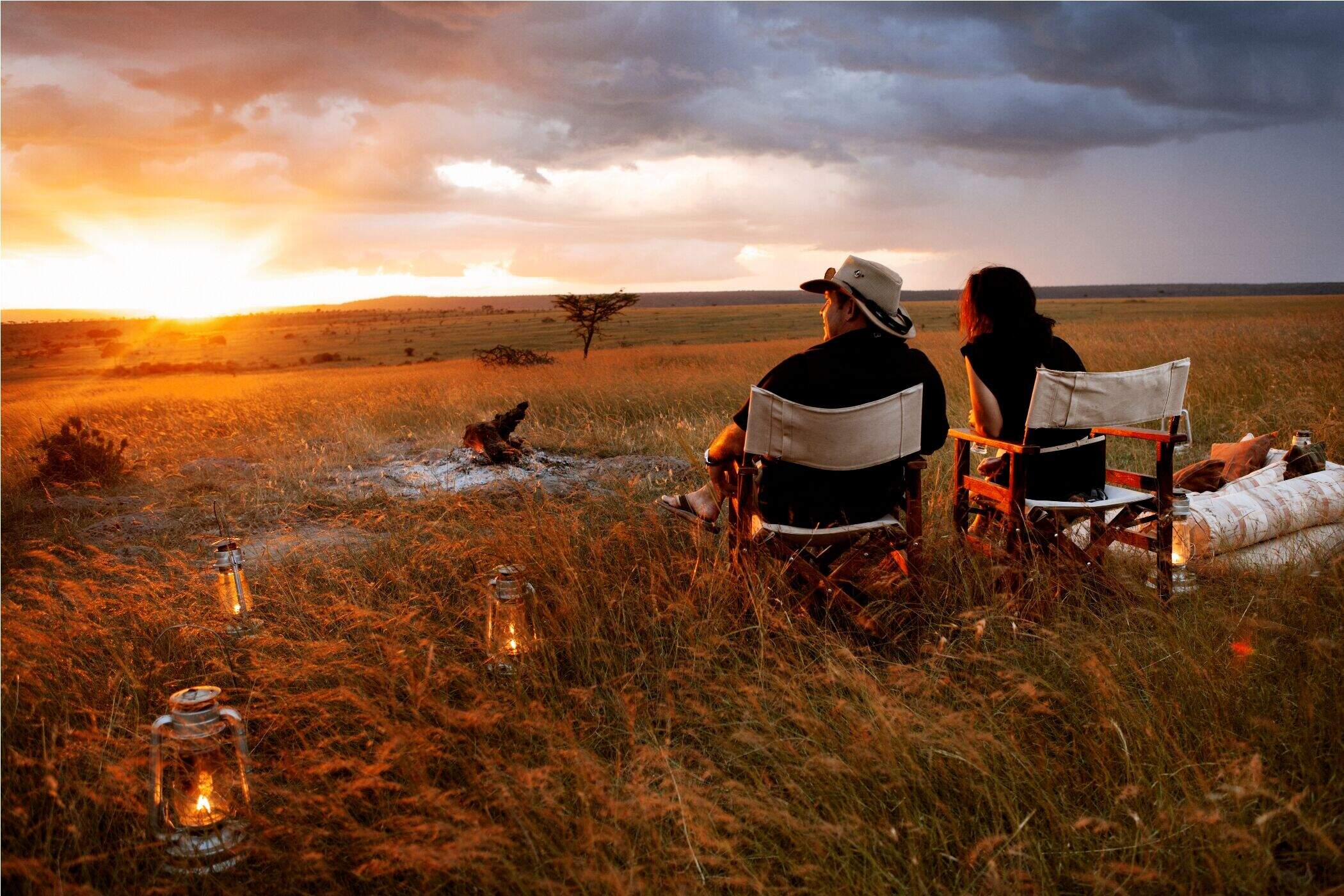
Karen Blixen Camp
Karen Blixen Camp sits on a meander of the Mara River in the Mara North Conservancy, just beyond the northern boundary of the Maasai Mara National Reserve.
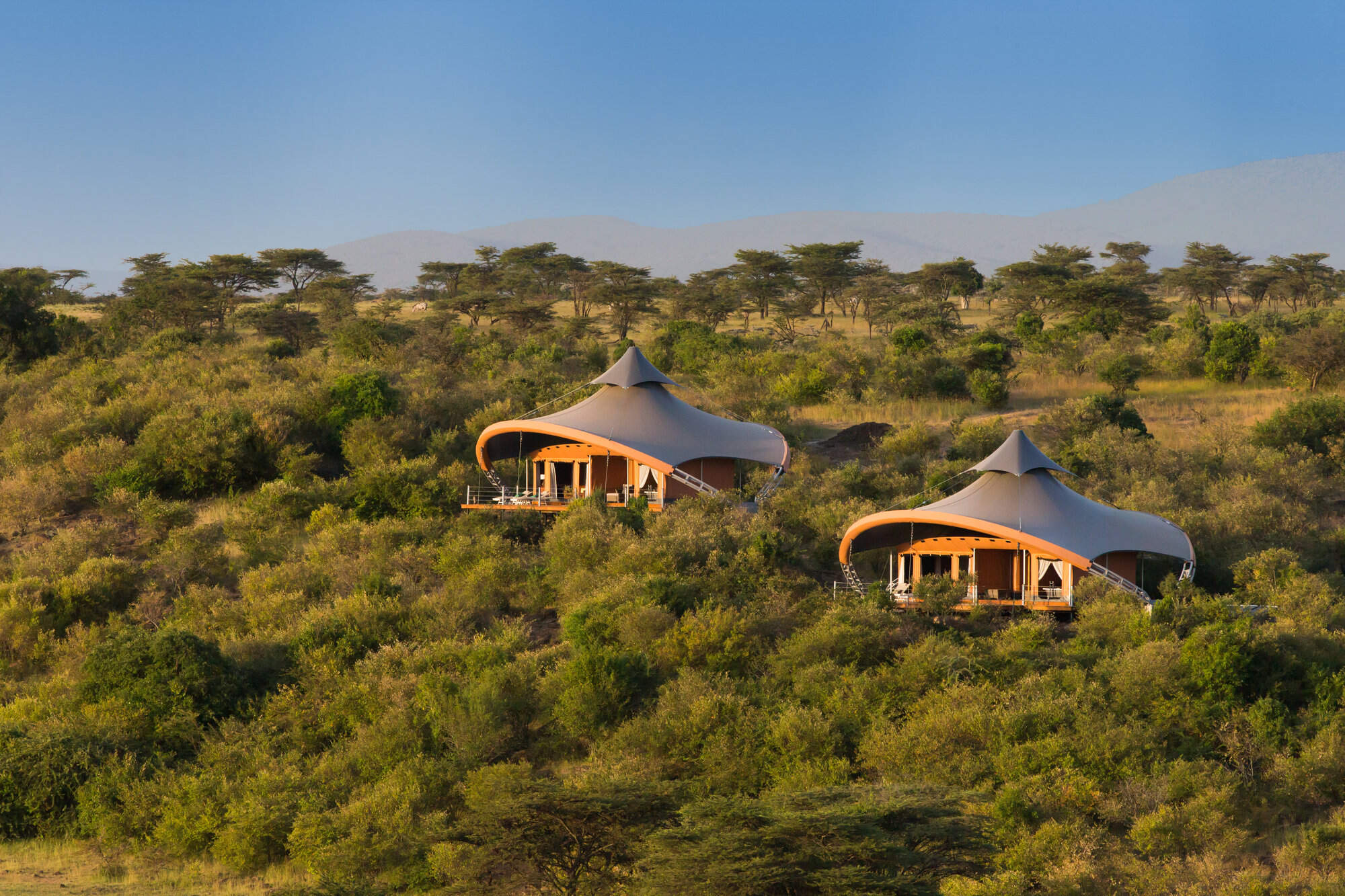
Mahali Mzuri
Mahali Mzuri is a strikingly modern tented camp in the Virgin Limited Edition group, in a remote part of the Mara ecosytem's Olare Motorogi Conservancy. It has lovely views and all the luxuries of a five-star hotel.
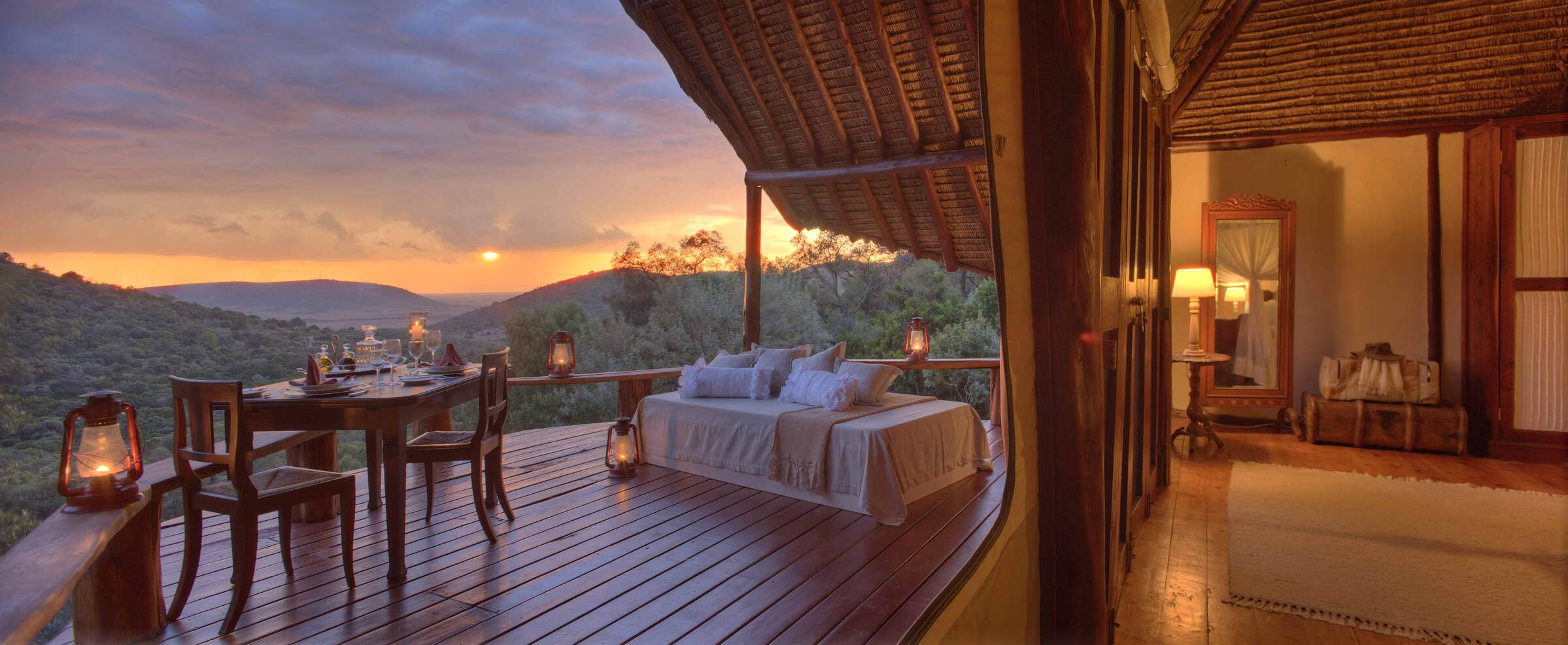
Saruni Mara
Saruni Mara is a luxurious permanent lodge, on the remote northern edge of the Mara North Conservancy, with stunning views, good guiding and very private and comfortable rooms.
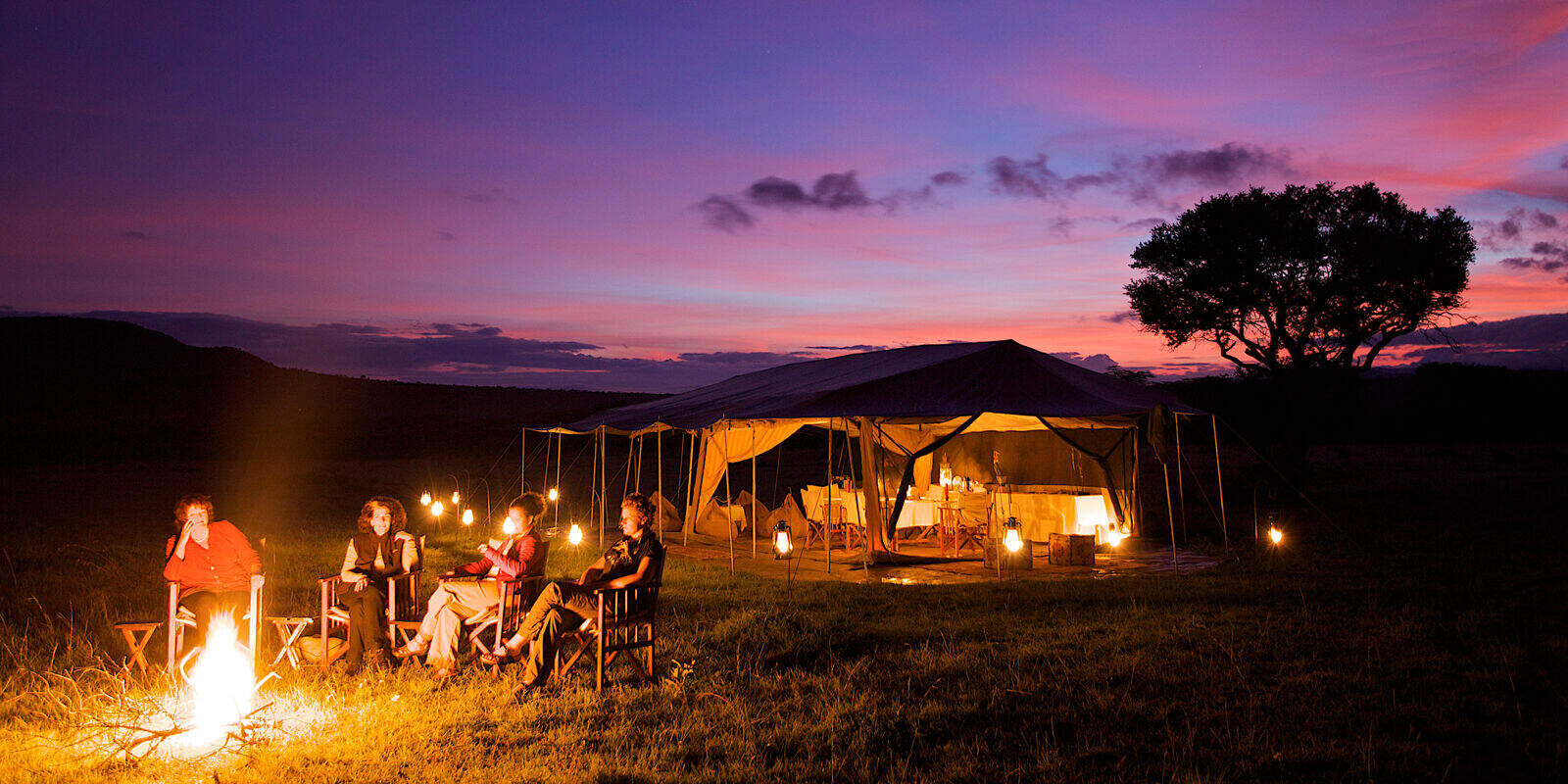
Leleshwa
Leleshwa was a delightful, boutique safari camp on the picturesque banks of a tributary of the Talek, with an extensive, little visited game area on its doorstep.
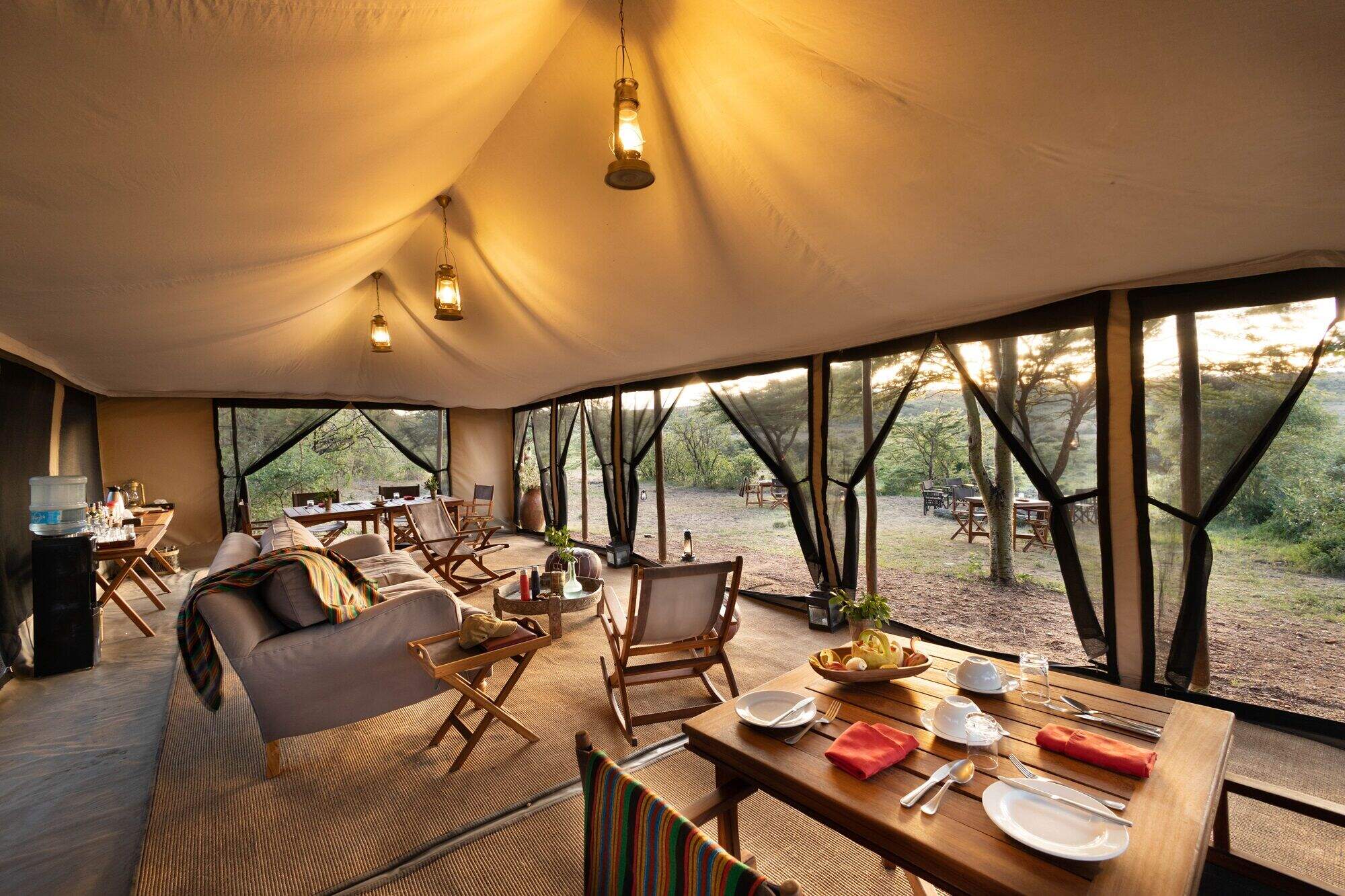
Basecamp Wilderness
Basecamp Wilderness Camp is a simple, traditional tented camp, set in a remote valley in the Naboisho Conservancy in the Mara ecoystem.
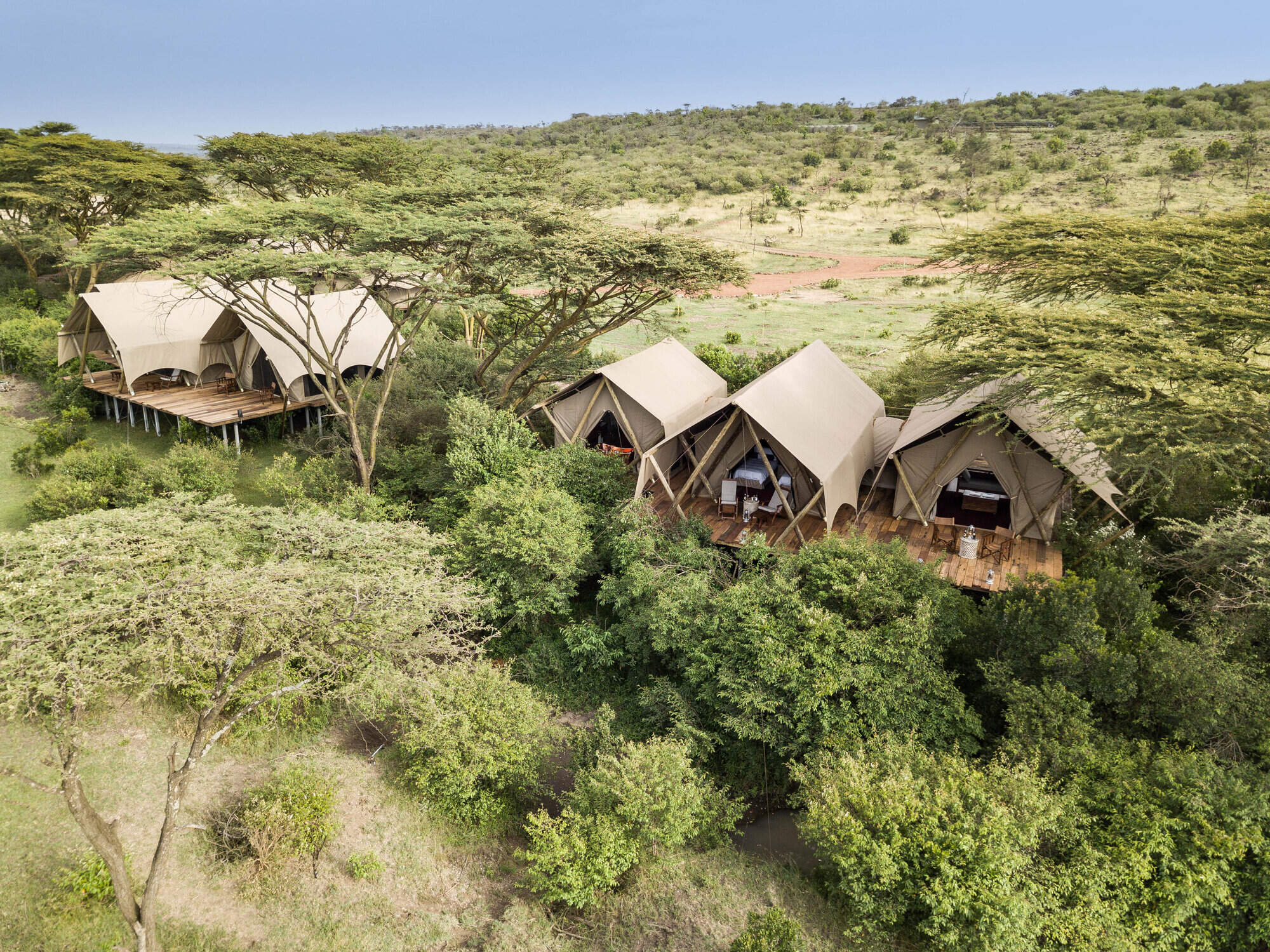
Mara Nyika
Mara Nyika is one of the newer additions to the Naboisho Conservancy and offers a luxurious and exclusive safari.
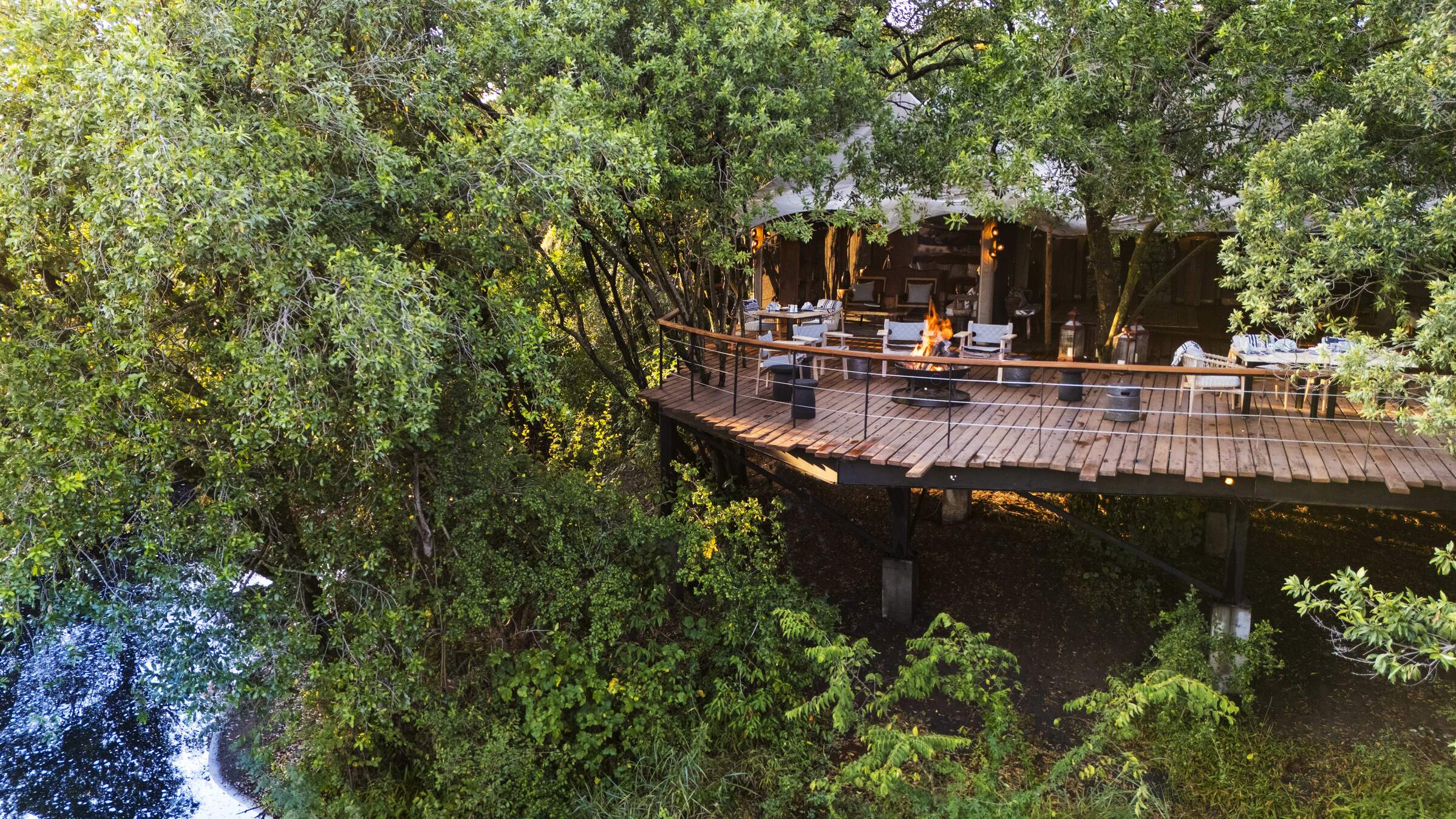
Mara Toto Tree Camp
Mara Toto Tree Camp is located on a wooded bend of the Ntiakatek River, 1km south (as the pied crow flies) from its sister camp, Mara Plains. It's the offspring of the original "Mara Toto" which was swept away in floods.
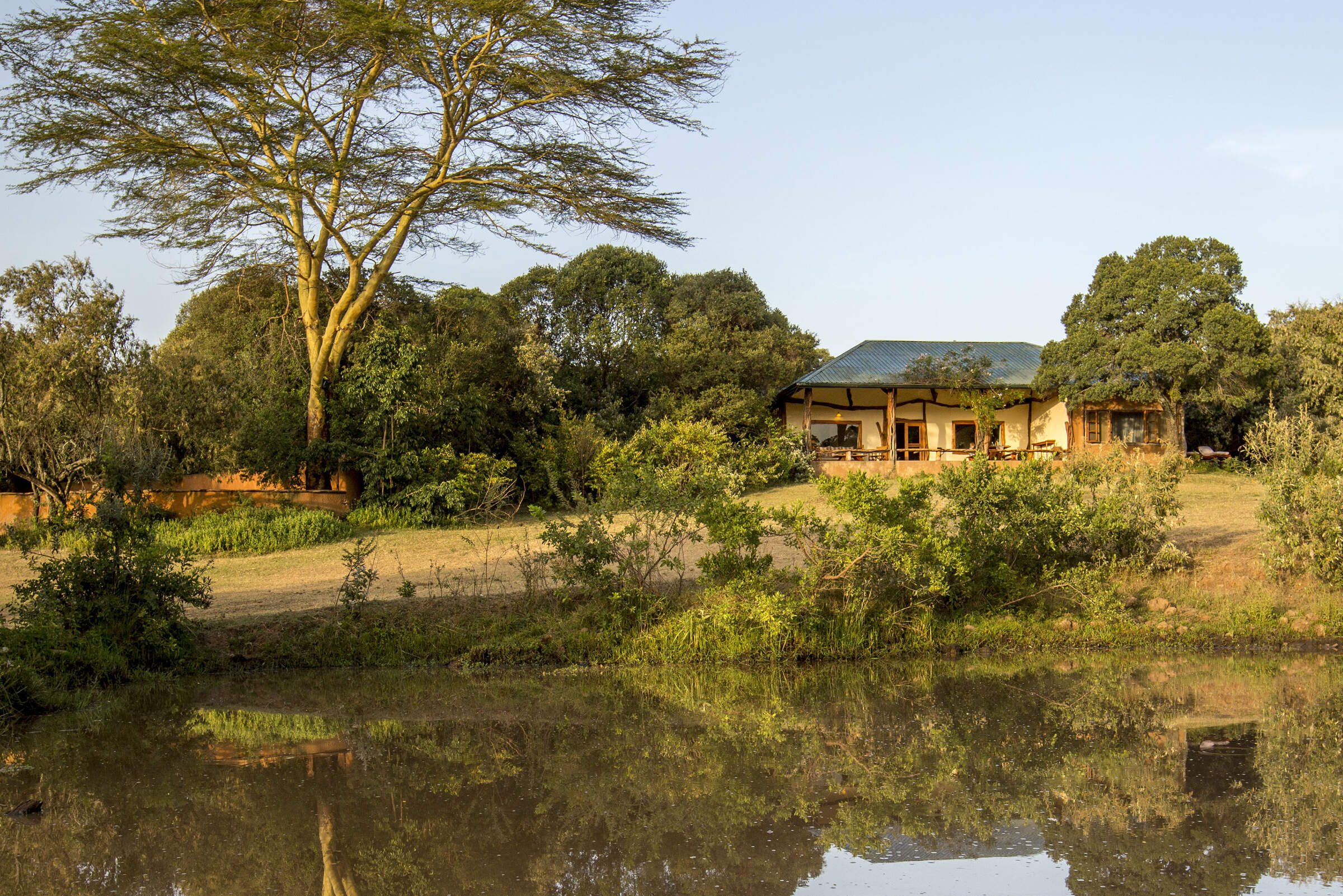
Basecamp Mara Houses
Basecamp Mara Houses consists of three private houses located in the northernmost part of the Mara North Conservancy.
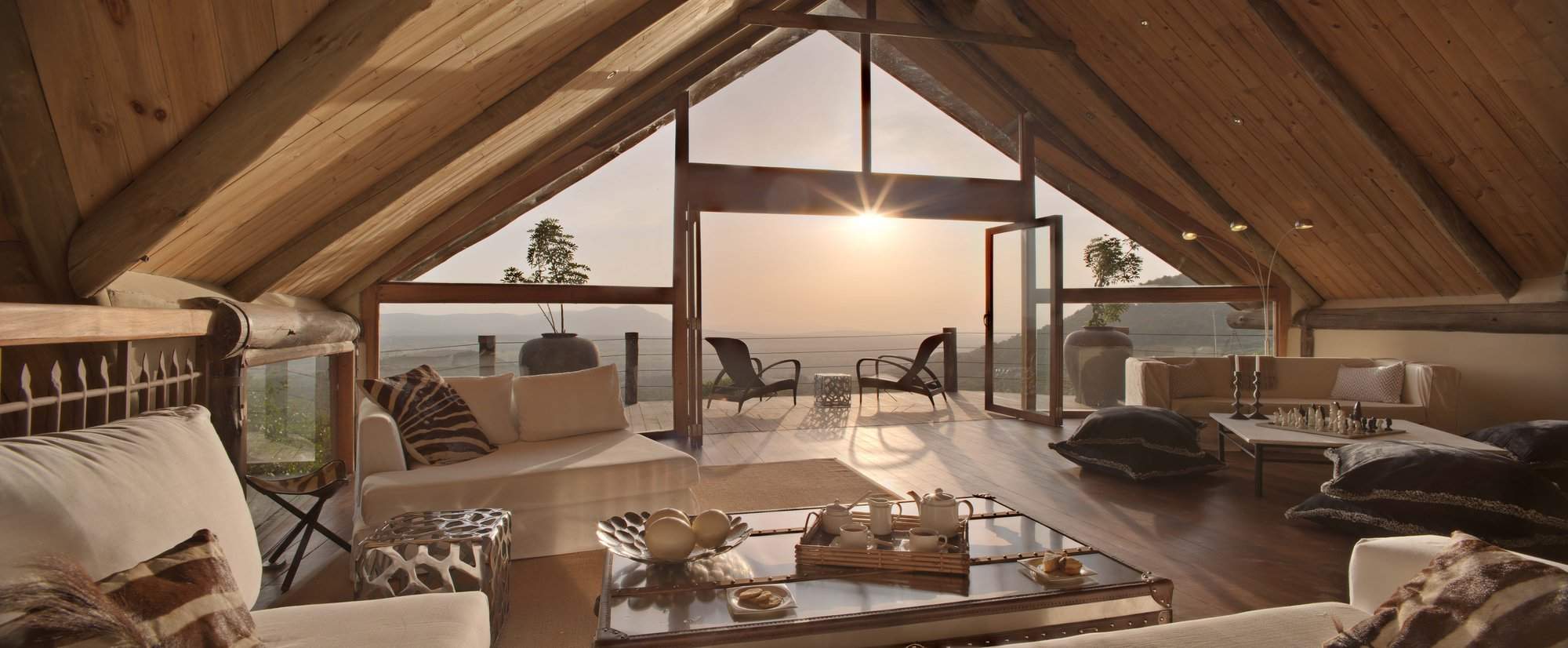
Cottars Private House
Cottar's Private House is one of the few truly luxurious, modern private houses in the Mara ecosystem, spoiling its guests with first-rate staff, a swimming pool and wonderful views.
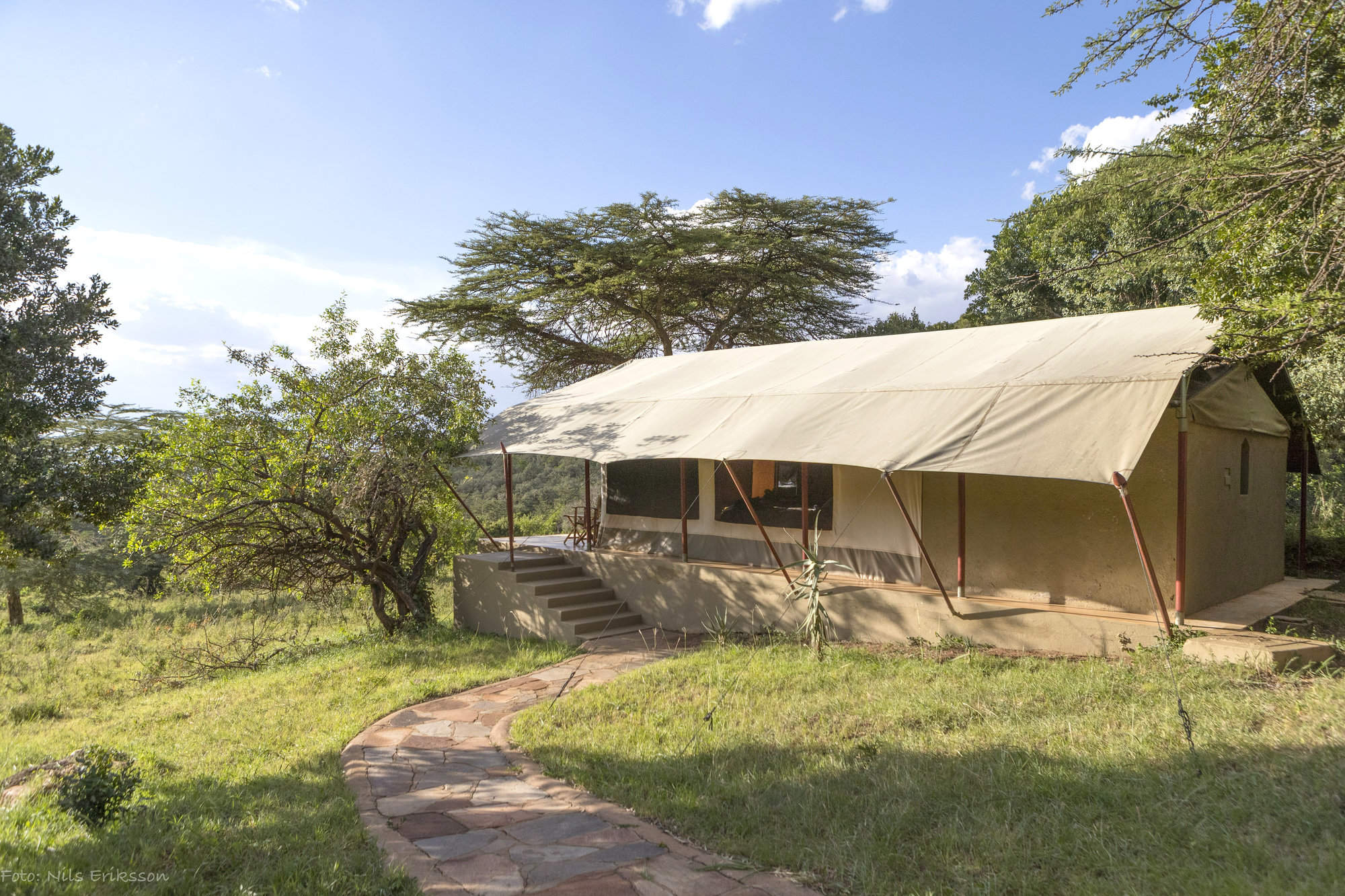
Entumoto
Entumoto is a high-end tented camp, with a swimming pool, situated in a very pretty location on the east side of the Maasai Mara ecosystem.
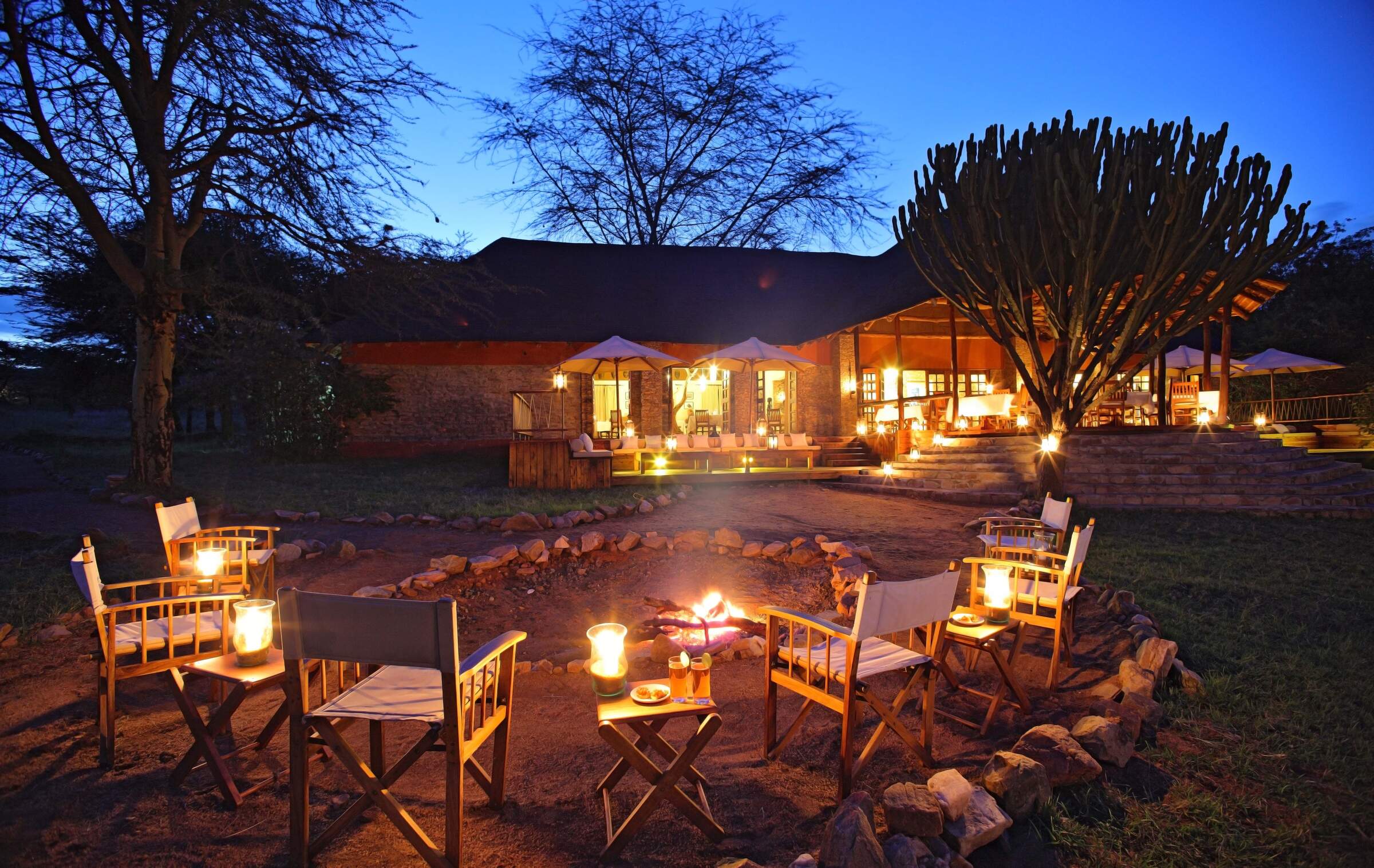
Mara Bushtops
Mara Bushtops is a luxury safari hotel on a private concession, outside the Maasai Mara National Reserve, with the emphasis on comfort, relaxation and good food and wine.
When to go to Maasai Mara Conservancies
Our month by month guide: What it's like to visit Cottars 1920s Camp in Maasai Mara Conservancies
Jan
Feb
Mar
Apr
May
Jun
Jul
Aug
Sep
Oct
Nov
Dec
Kenya in January
Clear, hot days and warm nights make this high season a popular time for safaris and it’s also good for diving and snorkelling as water clarity is excellent and gets better as the dry season progresses. Most lodges and tented camps treat January after the New Year week is over, as mid-season, making it a good compromise in terms of value for money with reasonably reliable, dry weather and some greenery left in the landscape.
Expert Africa bases its description of climate and weather in January, like the other months of the year, on the climate records of roughly the last 100 years, and it's fair to say that the weather and seasons since the beginning of this century have been highly irregular and unpredictable.
- On average, January is the second driest month of the year
- Elephants dig waterholes in the dry riverbed in the Samburu reserve.
- Wildebeest and many antelope have their calving season, to February.
- Migrant birds are seen in huge numbers, especially in the Rift Valley.
- Sea water clarity around the coral reefs generally good.
Our view
Fantastic: the very best time to visit
Weather in January
Kenya in February
With the short dry season well established, the grass grazed down and wildlife gathering close to water points, this is still a good time for a safari. Good water clarity in the Indian Ocean's coastal waters makes for excellent diving and snorkelling conditions.
Expert Africa bases its description of climate and weather in February, like the other months of the year, on the climate records of roughly the last 100 years, and it's fair to say that the weather and seasons since the beginning of this century have been highly irregular and unpredictable.
- On average, February is the driest month of the year.
- It’s sometimes possible to swim with whale sharks at Diani Beach.
- Migrant birds are still seen everywhere, especially near water.
- This is usually peak calving season for wildebeest and many antelopes.
- This month is often the hottest of the year, especially on the coast.
Our view
A very good time to visit
Weather in February
Kenya in March
Hot, increasingly humid weather – with good diving and snorkelling conditions at the start of the month – gives way to rains and lower accommodation costs. Expert Africa bases its description of climate and weather in March, like the other months of the year, on the climate records of roughly the last 100 years, and predicting the seasons since the beginning of this century has been difficult.
March is the month when – traditionally – intensely hot conditions build up until a cloudburst finally happens at the end of the month or in early April, to relieve the humidity. As ever, regional variations across the country can greatly impact on visitors' experiences.
- Sea-water clarity is best for diving before the long rains start.
- Visitor numbers are low, though the Easter holidays can be busier.
- Night skies can be scintillatingly clear in early March.
- Cropped down savannah grasses can make it easier to see the wildlife.
- Temperartures climb high, especially at lower elevations.
Our view
A good time to visit, with pros & cons
Weather in March
Kenya in April
April sees the full onset of the southeast monsoon wind or kusi, which heralds the long rains. Temperatures drop soon after the rains are established and you’ll often have facilities largely to yourself in this more affordable low season, sometimes known as the "green season". The bush quickly springs to life, with greenery sprouting almost before your eyes. While you're likely to get a fair number of heavy showers, the breaks in the rain can yield sparklingly clear conditions.
With the dust settled and bright sun piercing the clouds, conditions can be sublime for photography, especially first thing in the morning or in the late afternoon with another storm brewing. You may be lucky, or you may find conditions very wet and muddy.
- A wet month, the coast often gets more than 300mm (12in) of rain.
- Sunny spells can provide great light for photography.
- Buffalo and zebra calving season often happens in this month.
- Baby crocodiles hatch, for example on Central Island in Lake Turkana.
- Palearctic migrant birds gather to fly north to breeding grounds.
Our view
A time to avoid if possible
Weather in April
Kenya in May
While game viewing can be trickier as vegetation runs riot, between the cloudbursts the colours and light are great for photography at this time of year. Expert Africa bases its description of climate and weather in May, like the other months of the year, on the climate records of roughly the last 100 years, and while it's reasonable to expect heavy rains in many parts during this month, especially on the coast, the rains don't always come evenly or in some areas come at all.
In an El Niño year, the so-called long rains that normally are established across much of the country by May can be meagre, to the despair of farmers. On the other hand in a La Niña year, the long rains can bring floods. On the coast, the monsoon winds make the climate much more predictable, with heavy rains common throughout this month.
- Frogs breed in the ponds in the Arabuko Sokoke Forest near Watamu.
- Wildebeest, impala and other grazers are in rut (the breeding season).
- Kilimanjaro looks its best as heavy rain falls as snow on the summit.
- There's a sharp peek of rainfall on the coast with many rainy days.
- Accommodation prices are uniformly low, while some camps close.
Our view
A time to avoid if possible
Weather in May
Kenya in June
The rains give way to cloudy, cooler weather, often making for comfortable conditions by the end of the month, especially in the highlands. Starting from mid-June or the beginning of July and running until the end of October, this is the high season, and accordingly has higher accommodation rates and – at least until early September – higher numbers of visitors.
While the early part of June can often be rainy on the coast, it can be a great time to go on safari, with fresh greenery, many young animals and good photographic conditions with clear air.
- The Taru Desert, inland from the coast, is carpeted with flowers.
- The Lake Turkana Cultural Festival is held in Loiyangalani.
- Madaraka Day (commemorating self rule) is 1 June.
- The annual Lewa marathon runs a course through the wildlife.
- The Diani Rules "sports" event rips up the rulebook at Diani Beach.
Our view
A good time to visit, with pros & cons
Weather in June
Kenya in July
Kenya’s “winter" season sets in (winter is a misnomer but locals feel the change), and the highlands can be rather grey. Skies are often cloudy and the days can be surprisingly cool, with an average daytime high in many highland safari areas of 15-20°C and night-time temperatures dropping below 10°C in Nairobi and the highlands. Lower parts of the country and the coast are usually warm and dry, typically reaching highs of around 25°C with lows in the high teens.
As this is the start of the high season, coinciding with the usual arrival of the wildebeest migration in the Maasai Mara, July is a busy month. Ask your Expert Africa specialist to advise on how to avoid the crowds, which is not that difficult to do.
- The wildebeest migration usually reaches the Maasai Mara in July.
- Simbi Lake (Kisumu) and Crater Lake (Naivasha) can attract flamingoes.
- Watersports start to pick up and some surfing is possible at Malindi.
- Afternoon thunderstorms are a common feature in the Maasai Mara.
- The sea can be choppy along the coast, making diving difficult.
Our view
A good time to visit, with pros & cons
Weather in July
Kenya in August
The Great Migration fills the plains of the Maasai Mara, and school’s out, so the park roads are full of tourists – ask your Expert Africa specialist for advice on crowd avoidance tactics. Choose a private conservancy rather than a public national park or national reserve for quieter conditions.
Like July, August is generally mild and relatively dry in the safari areas, but it can be very chilly in the highlands, even in the middle of the day, and hail occasionally falls above altitudes of around 2,400m (8,000ft). Nairobi can be disappointingly overcast, with low cloud.
- Apart from Christmas holidays, this is the busiest month of the year.
- Late August sees peak wildebeest drama at the Mara River crossings.
- Coastal winds are good for kite- and wind-surfing.
- Few mosquitoes are around at this generally dry time of year.
- The annual Camel Derby takes place in the Samburu capital, Maralal.
Our view
A good time to visit, with pros & cons
Weather in August
Kenya in September
The skies clearing of cloud signals the start of hot, dry weather with little chance of rain – and, after the first few days of the month, far fewer visitors – making the latter part of September a good time for a quieter safari. While early September is often good for dramatic migration crossings along the Mara River, you might consider deliberately postponing your trip until later in the month, when the migration can still be very impressive and visitor numbers fewer.
If tourist surges are somewhat predictable, however, the patterns of the wildebeest migration are more volatile, and like all of Expert Africa's climate and weather assessments, they are based on accumulated years of experience rather than guaranteed certainty.
- This is still high season, with prices to match.
- Many river crossings take place on the Mara river in both directions.
- Natural bush fires flush out insects and small animals for predators.
- The Rift Valley Music Festival takes place by Lake Naivasha.
- With school holidays over by early September, late-month is quieter.
Our view
Fantastic: the very best time to visit
Weather in September
Kenya in October
Still hot, mostly dry and not too busy, this is many people’s preferred month for a safari, and it’s also good for diving and snorkelling. The wildebeest and zebra herds of the great migration are often still to be seen, though in dwindling numbers. The swamps of Amboseli attract thirsty wildlife including large herds of elephants.
While we wouldn't expect much rain across most of the country this month, the climate has become so unpredictable that you can never say never, and the possibiity of the short rains – usually associated with November to mid-December, starting early, can't be discounted.
- This month sees the tail end of the great migration in the Mara.
- Palearctic migrant birds start to arrive, staying until March.
- Turtle nests hatch at Watamu, until November.
- Amboseli elephants focus on the swamps for their daily water.
- The Indian Ocean monsoon winds turn from southeast to northeast.
Our view
A very good time to visit
Weather in October
Kenya in November
The northeast monsoon wind or kaskazi heralds the start of the “short rains", usually some time in the second half of the month. From November to mid-December, this is the low season, and accordingly has lower accommodation rates and lower visitor numbers. Across most of the country you can expect warm, somewhat cloudy weather, with occasional heavy showers and localised flooding.
Expert Africa bases its description of the climate in November, like the other months of the year, on the records of roughly the last 100 years, and it's fair to say that the seasons since the beginning of this century have been highly irregular and unpredictable: some years the short rains don't come at all, or don't reach every part of the country. In an El Niño year, the November short rains can be very heavy, but in a La Niña year, they can fail completely.
- Swimming with dolphins in Lamu can be done from now until April.
- Birders gather at Ngulia in Tsavo West to ring Palearctic migrants.
- The Lamu Cultural Festival takes over the town and Lamu Creek.
- Agricultural shows often take place regional market towns.
- This is low season, so camps can be great value, with special offers.
Our view
A good time to visit, with pros & cons
Weather in November
Kenya in December
In a typical December, the rains usually finish by middle of the month, leaving the landscape looking its best, under clear blue skies, and heralding the start of the second peak tourist season from around 20 December to the first week of January. Our assessment of the likely weather in December, like the other months of the year, is based on climate records, and it's fair to say that the seasons since the beginning of this century have been highly irregular and unpredictable.
Christmas can sometimes be wet, but most years the rains have finished a week or two earlier, with the festive season ushering in the perfect combination of clear skies and sunshine by day and starry nights.
- Christmas and New Year are busy, with the lodges and camps full.
- Rates are highest after 24 Dec, with supplements on public holidays.
- Republic Day and Independence day are celebrated on 12 December.
- Good kite- and wind-surfing restarts, with strong northeasterly winds.
- Mango season begins, providing excitement for primates and elephants.
Our view
A good time to visit, with pros & cons
Weather in December

Looking for inspiration on where to travel next?
Visit our trip chooser to explore your options and find inspiration for your perfect African adventure
Inspire me